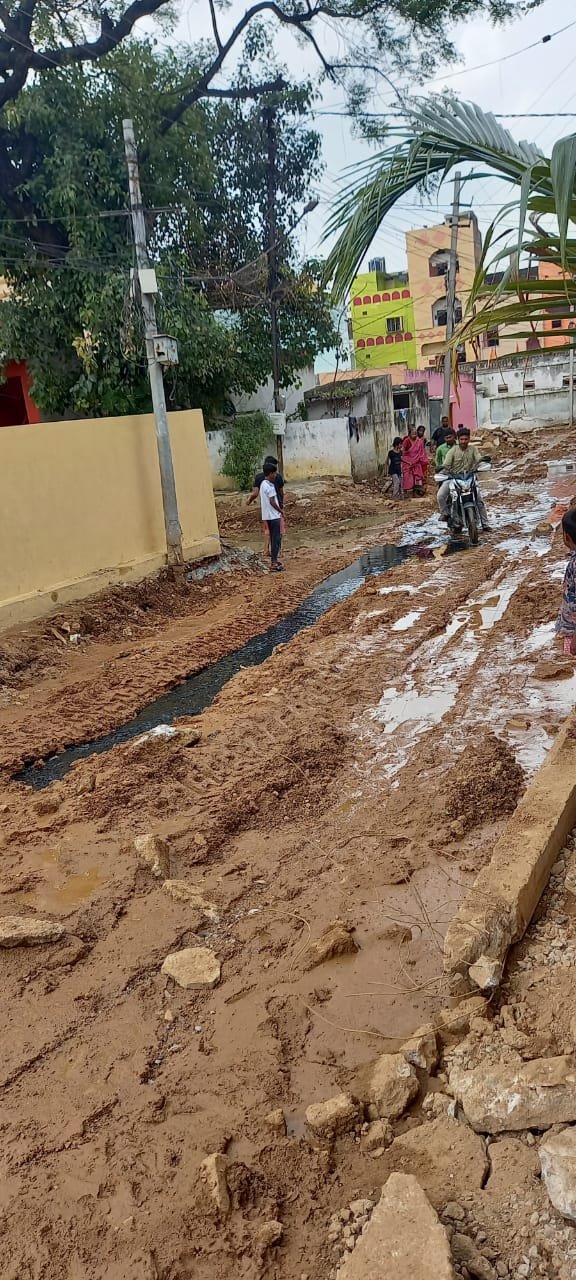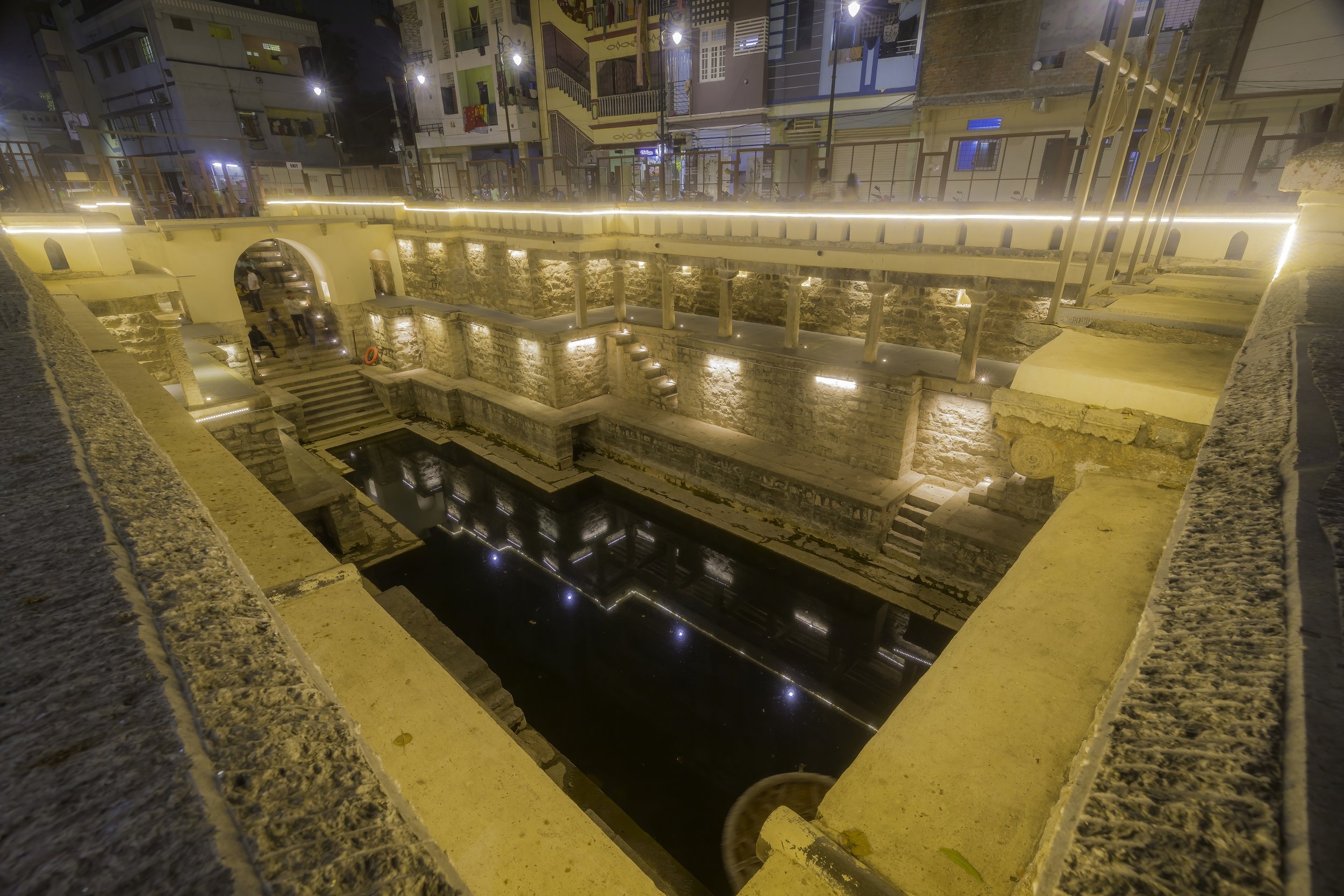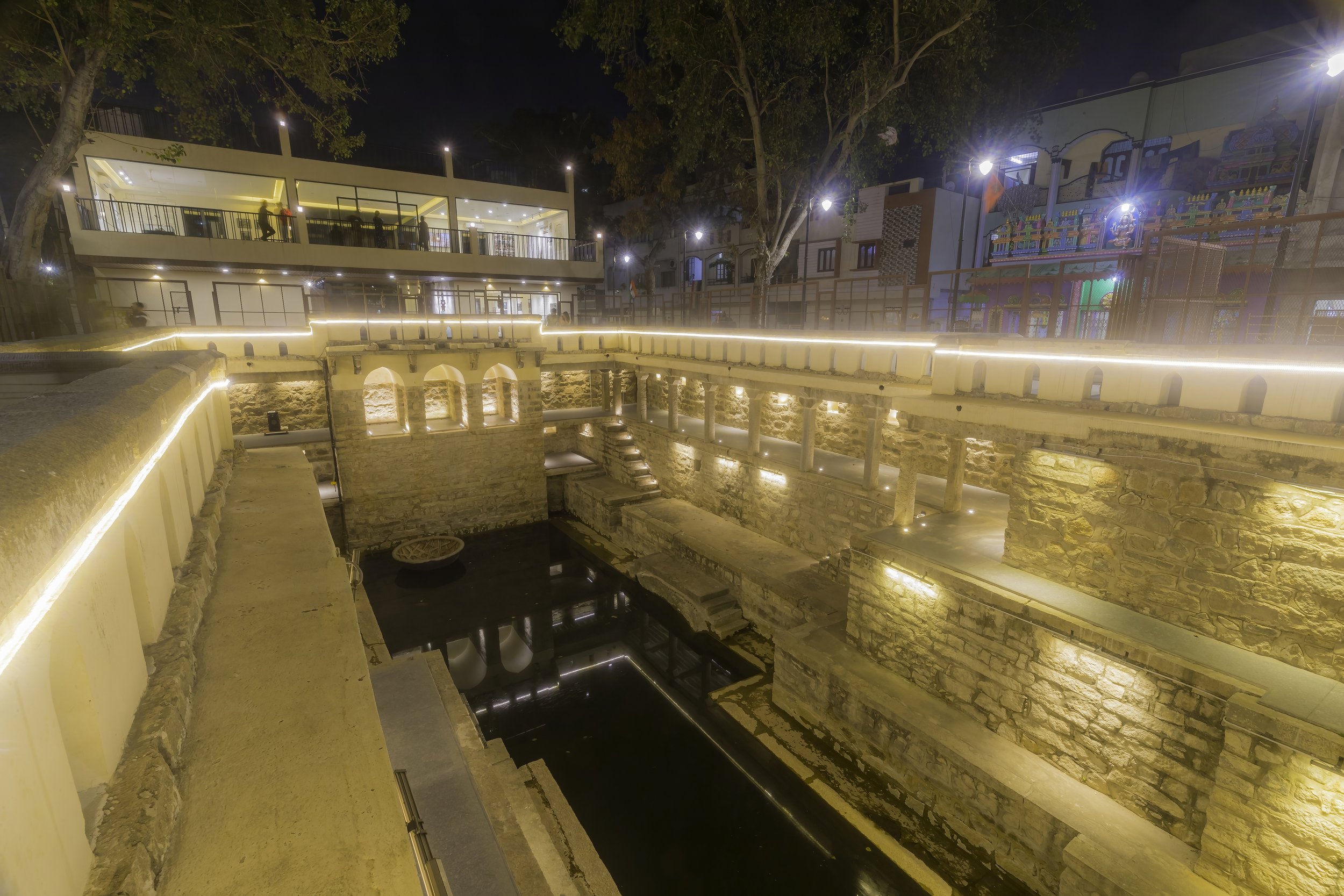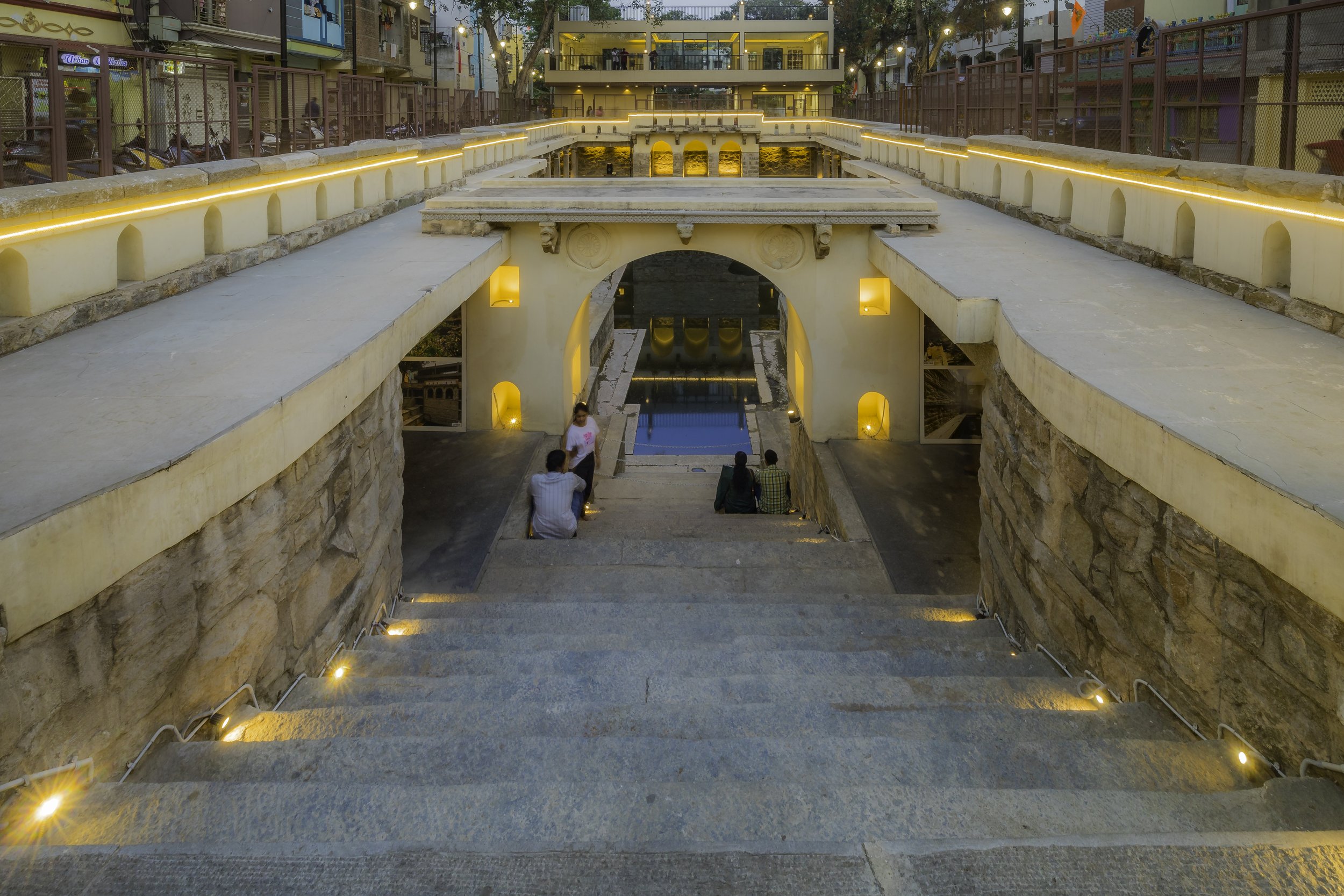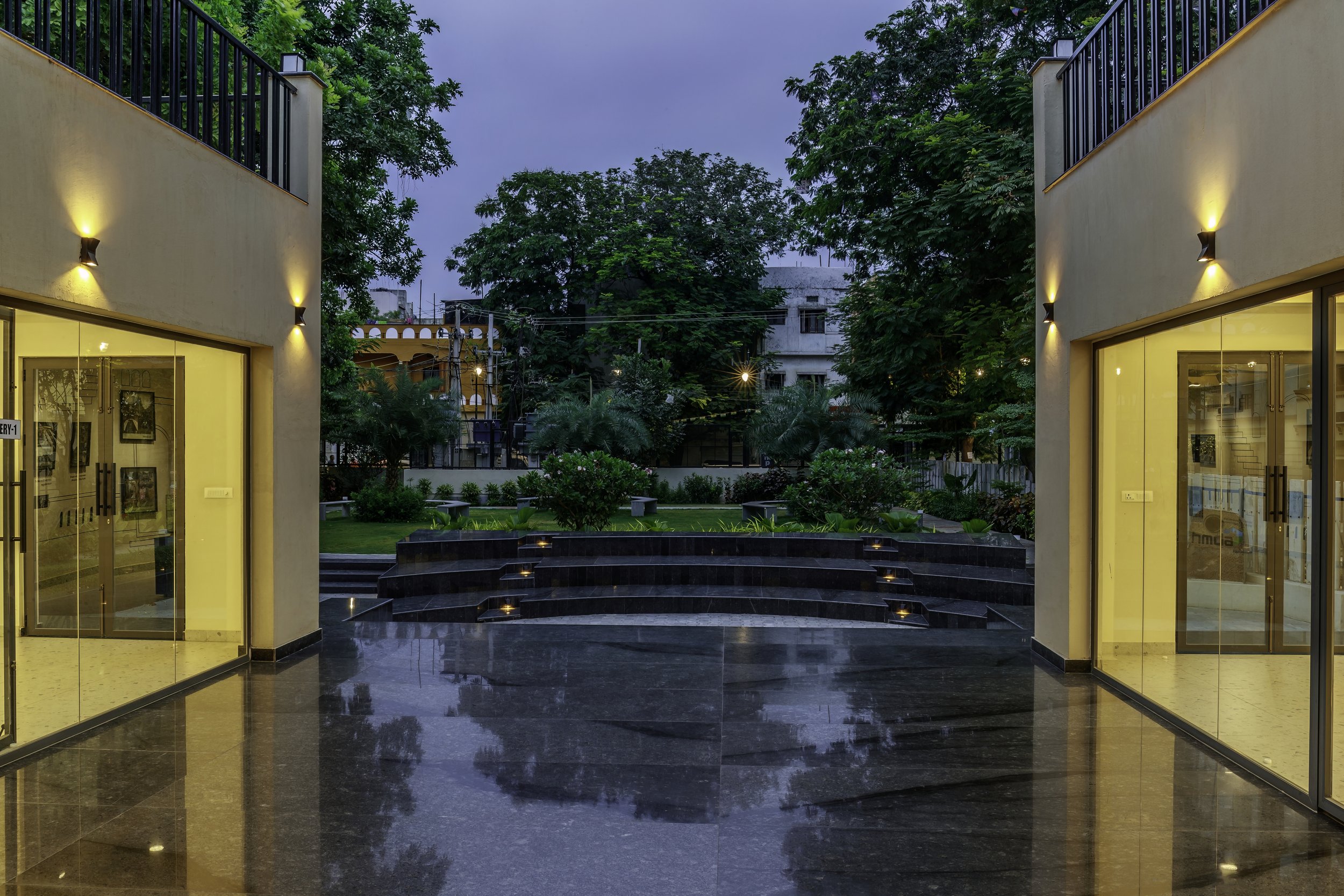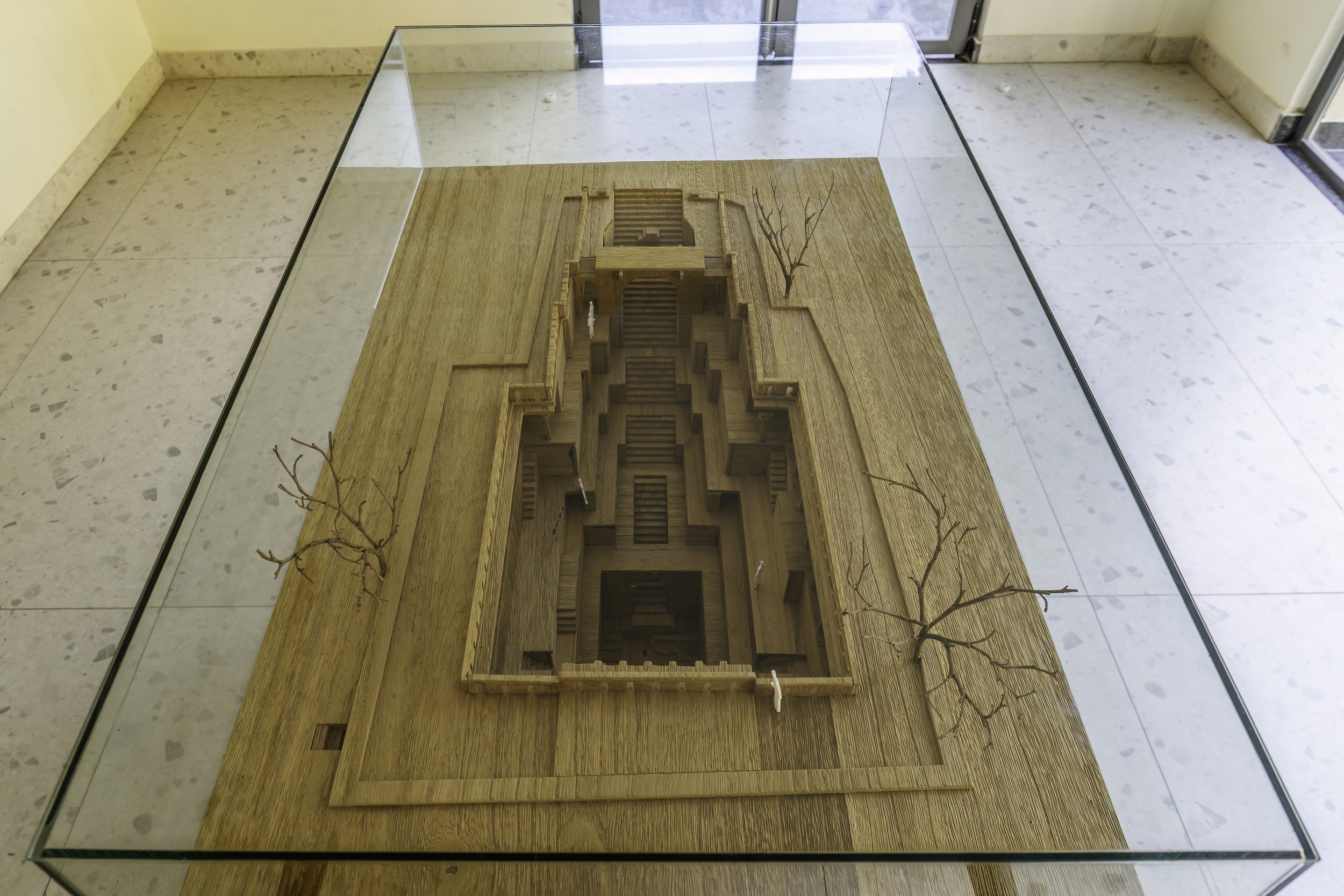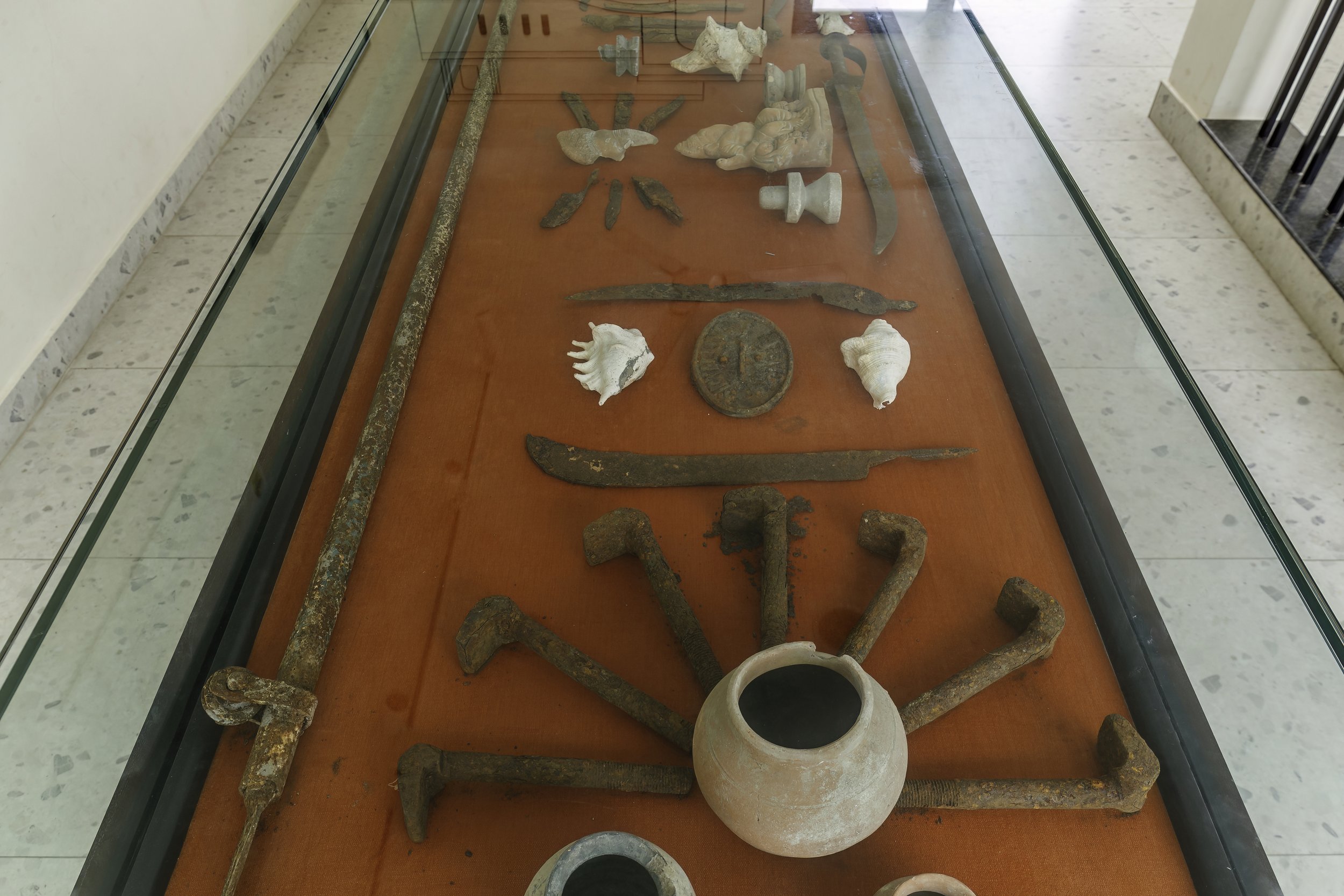Bansilalpet Stepwell
Naganah Kunta
Bhoiguda, Secunderabad
Stepwells of the Deccan - Chapter 1: The Sound of Water
The word Architecture immediately conjures up images of grandiose symmetrical structures and every great civilisation has contributed something special to the pantheon of world architecture. Egypt gave the world pyramids, Greece provided the Corinthian columns, and India provided the stepwell, elevating the humble act of collecting water into an extravagant piece of public theatre.
As Indians, we are blessed to have countless stunning architectural wonders, each designed to geometrical precision and many incorporating astronomical elements, which pay obeisance to the golden ratio. Unlike modern engineers across the world who, despite their access to a plethora of sophisticated tools and technology, struggle with imperfections, the builders of ancient India created magnificent monuments, with perfect symmetry, angles, balance and accuracy, without high-tech tools. This has piqued my curiosity, leading me to explore, discover and photograph some ancient structures in and around my home city of Hyderabad, across India and various other countries. I have written about some of my experiences at these monuments and you can read about them below.
But that said many of these monuments are often forgotten and ignored and some even lost in the annals of time. Among those are the many forgotten stepwells sprinkled across the twin cities of Hyderabad and Secunderabad and the state of Telangana. As of date the locations of 420 stepwells across multiple typologies are known across the state of Telangana and that number is expected to go up to more than 600 across the state with around 100 within the twin cities metropolitan area. Of these hundred 86 locations are already known.
A brief note on Step Well Typology: Six of the most studied, complete and referred to Indian texts on Vastu Vidya that have survived into the modern age are the Mayamata, the Manasara, the Samarangana Sutradhara, the Rajavallabha, the Vishvakarmaprakasha and the Aparajitaprccha. Numerous other important texts contain sections or chapters on aspects of architecture and design. But our interest today is in the ancient text of Rajavallabha which mentions four types of stepwells:
Nanda – a stepwell with one entrance
Bhadra – a stepwell with two entrances
Jaya – a stepwell with three entrances
Vijaya – a stepwell with four entrances
This, of course, is a basic overview of the different typologies, but there is much more to learn from a detailed study, which would be too extensive for a blog. I encourage further study to fully grasp the knowledge our ancestors had on the simple act of drawing water.
Bansilalpet Stepwell - in its avatar as a cultural space
Stepwells, also called Baolis or Vavs, are cisterns, wells and/or ponds with a series of steps and corridors descending to the water level fed by a perennial subterranean source. Rudimentary stepwells first appeared in India in the 3rd century CE, born of necessity in a capricious monsoonal climate zone that is bone-dry for much of the year yet drenched by torrential rains for many weeks. It was essential to guarantee a year-round water supply for human needs, particularly in the arid regions of north western & western India where the water table could be inconveniently buried 10 stories underground. Over the centuries, stepwell design evolved into astoundingly complex structures and played a significant role in defining subterranean architecture in India from the 7th to the 19th century. Some are multi-storeyed and quite deep and the water can be accessed by a Persian Water Wheel or “Saqiyah” (water-raising devices powered by animals - usually draught animals in India like bullocks, buffaloes or camels). There are also those that employ the Noria - a term commonly used for devices which use the power of moving water to turn the wheel. A Noria in contrast to the Saqiyah uses the power obtained from the flow of a river.
These multi-storeyed stepwells are most common in Western India and are also found in other arid regions of the Indian subcontinent. Most of these stepwells serve utilitarian purposes but they can also include embellishments of architectural significance and can also be seen as temple tanks or “pushkarinis”. These stepwells are used as storage and irrigation tanks to cope with the seasonal fluctuations in water and reduce the dependencies on the monsoons. A stepwell differentiates from a normal well in the fact that stepwells, as their name imply have steps leading down into the water, therefore making it easier for common folk to reach and access the groundwater and also to maintain and manage the well. Stepwells not only pull groundwater up for use but also recharge underground aquifers (rocks and sediment that hold groundwater) besides collecting rainwater that would otherwise runoff.
The first rock-cut stepwells in India date from 200 to 400 AD. The earliest example of a bath-like pond reached by steps is found at Uperkot caves in Junagadh. These caves are dated to the 4th century. Navghan Kuvo, a well with the circular staircase in the vicinity, is another example. It was possibly built in Western Satrap (200–400 AD) or Maitraka (600–700 AD) period, though some place it as late as the 11th century. The nearby Adi Kadi Vav was constructed either in the second half of the 10th century or the 15th century.
But, having said that, I have seen this unique feature at the Harappan metropoly of Dholavira - their sophisticated water conservation system of channels and reservoirs, the earliest found anywhere in the world, built completely of stone. There was, I was told at the time, separate underground piping for royalty vs the common folk - once it was also mentioned that scented water of some sort could have been used. I have seen baths with underground drainage and huge reservoirs with steps leading down into them on all sides. All of this dates, I was told at the time, to 5000-6000 years before present day but now after the recent excavations at Rakhigarhi I am sure those dates will move further back. The presence of wells and other water conservation structures at major Indus Valley/ Harappan Civilisation settlements like Harappa, Mohenjo-Daro, Dholavira, Ganeriwala etc simply proves that the idea and need for preserving water, are deep-rooted in the Hindu psyche. It deifies belief that our ancestors had such advanced knowledge which unfortunately we appear to have lost somewhere in transit.
The gallery below illustrates some of the oldest and best examples of stepwells I have come across starting with the huge reservoirs of Dholavira. Read more about the mind boggling water management systems and reservoirs of Dholavira.
Hover on the images for the detail on them.

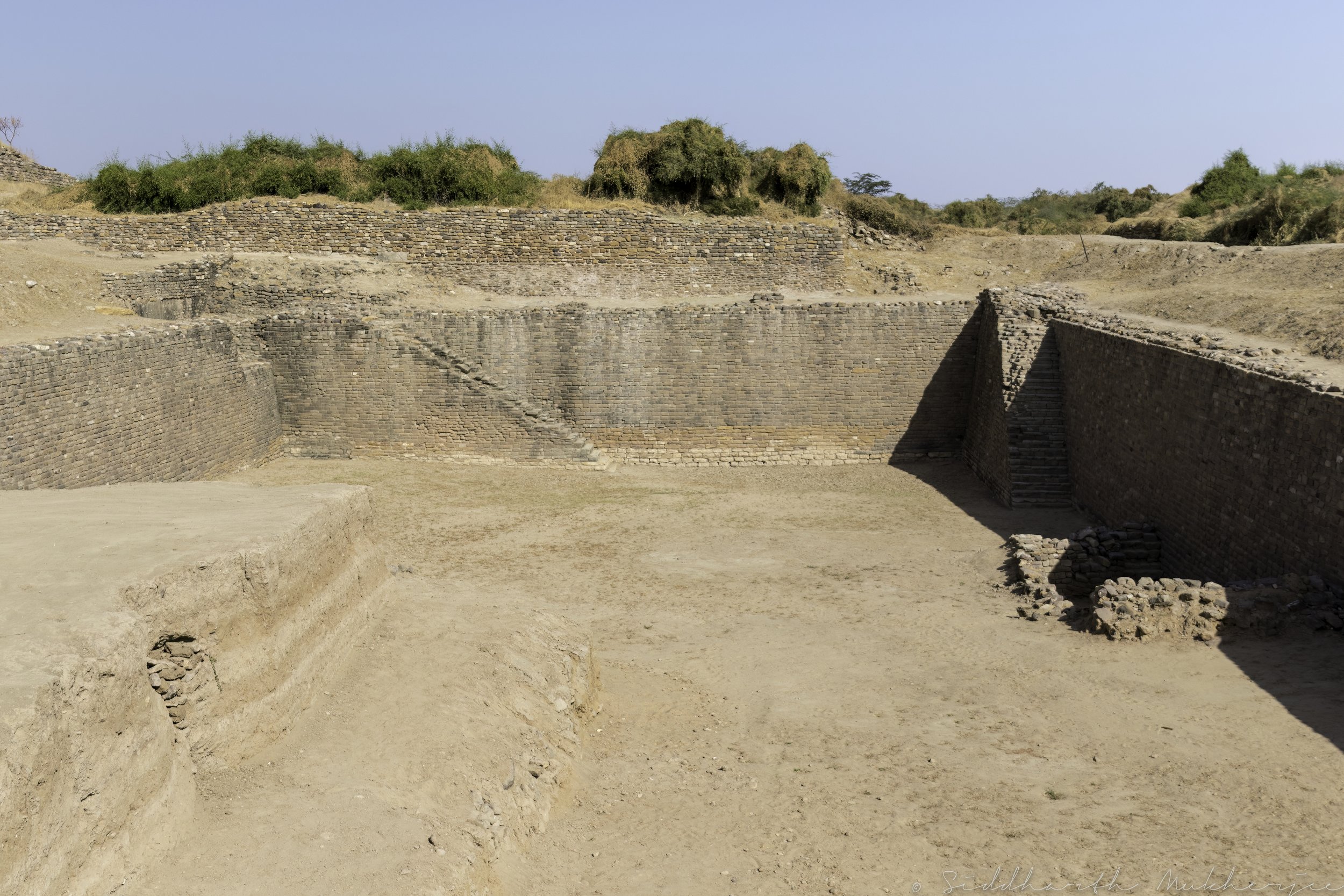
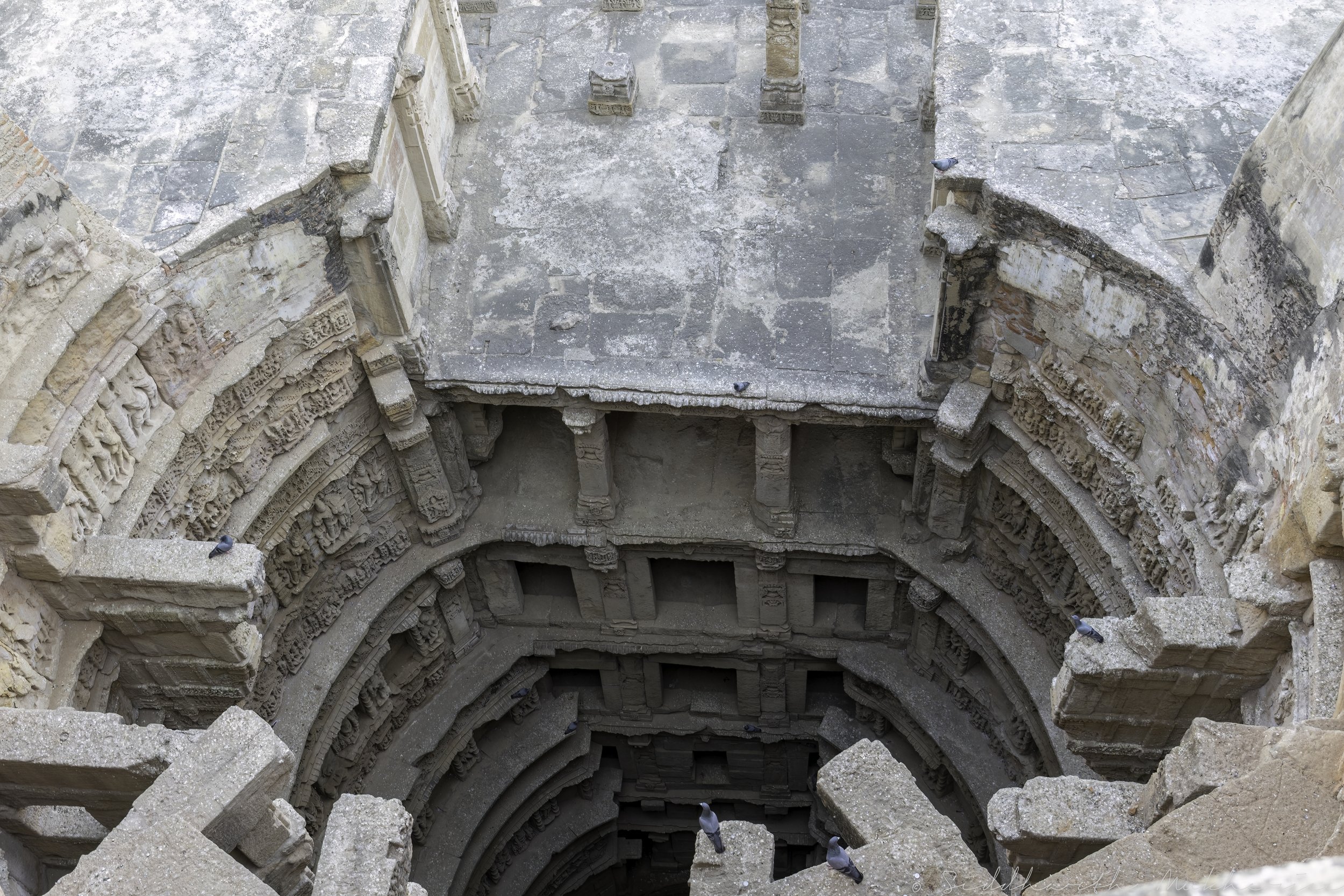
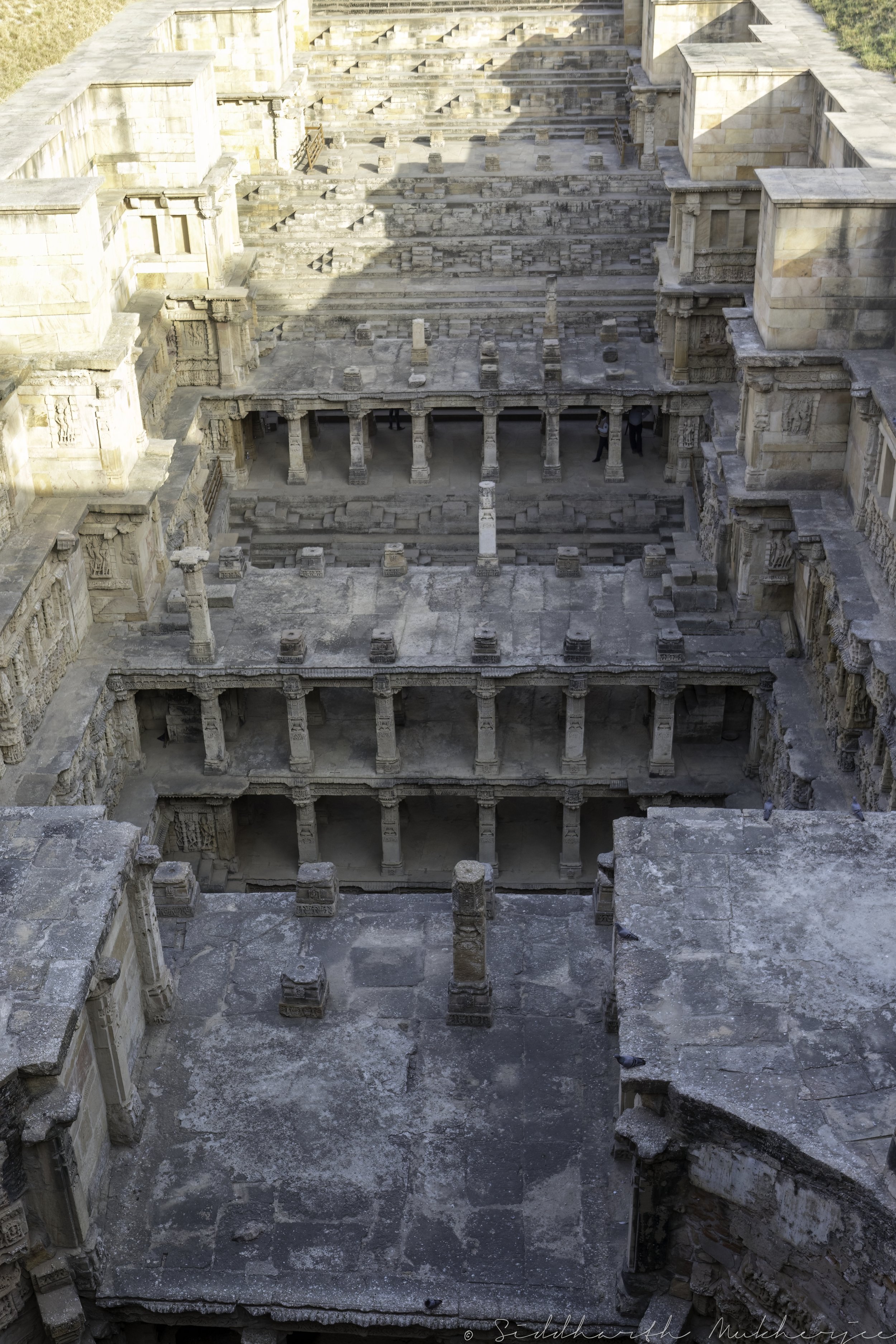
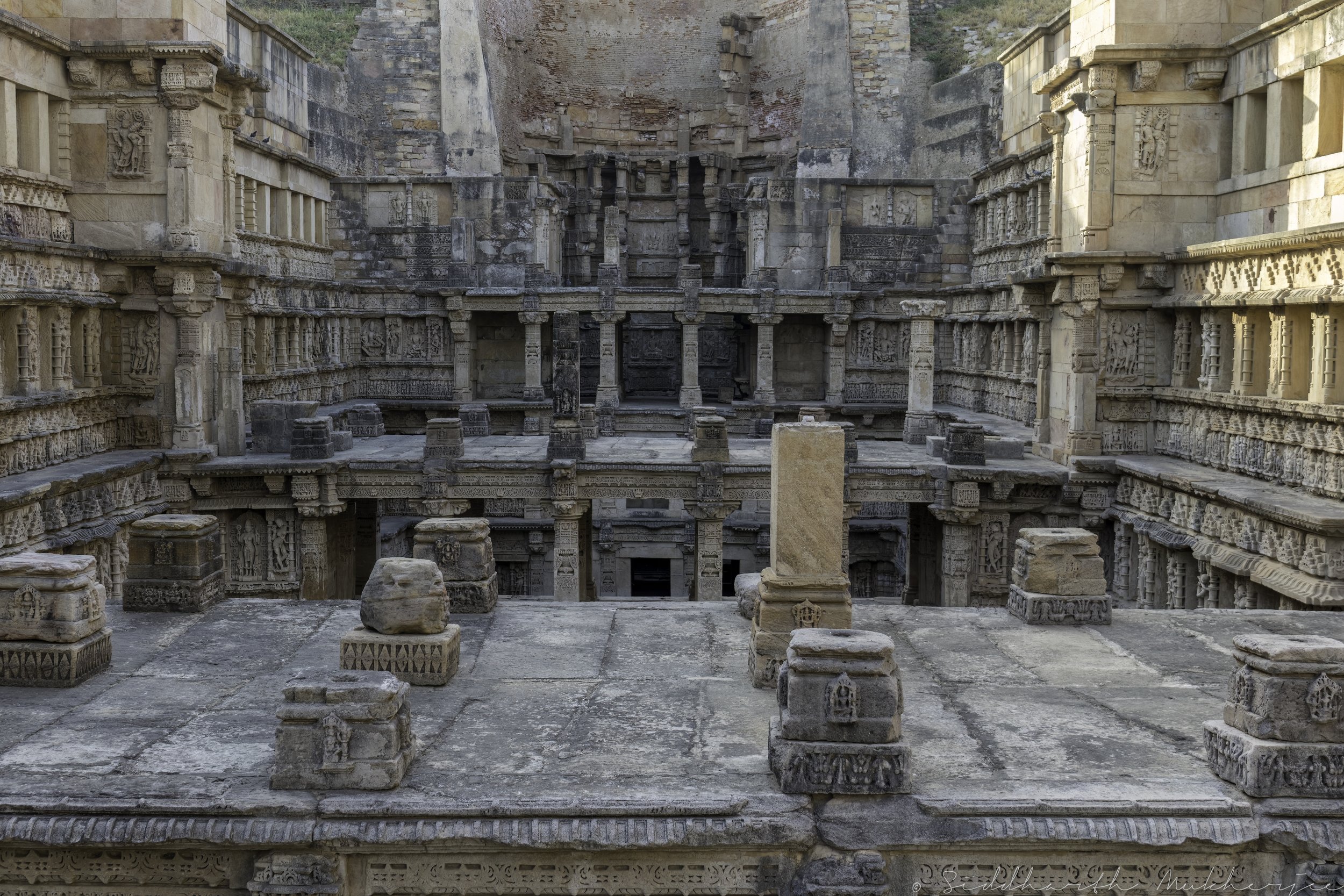
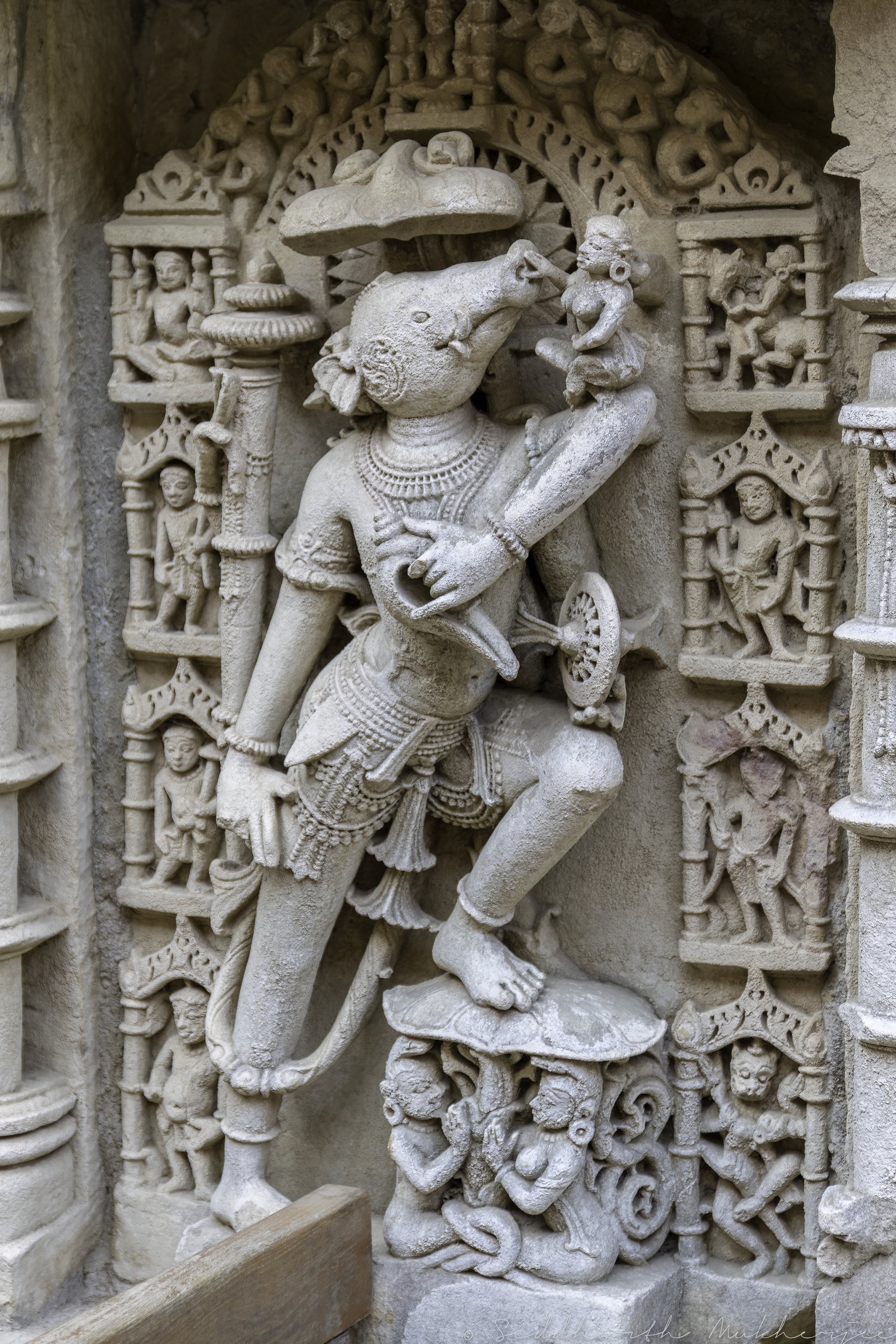
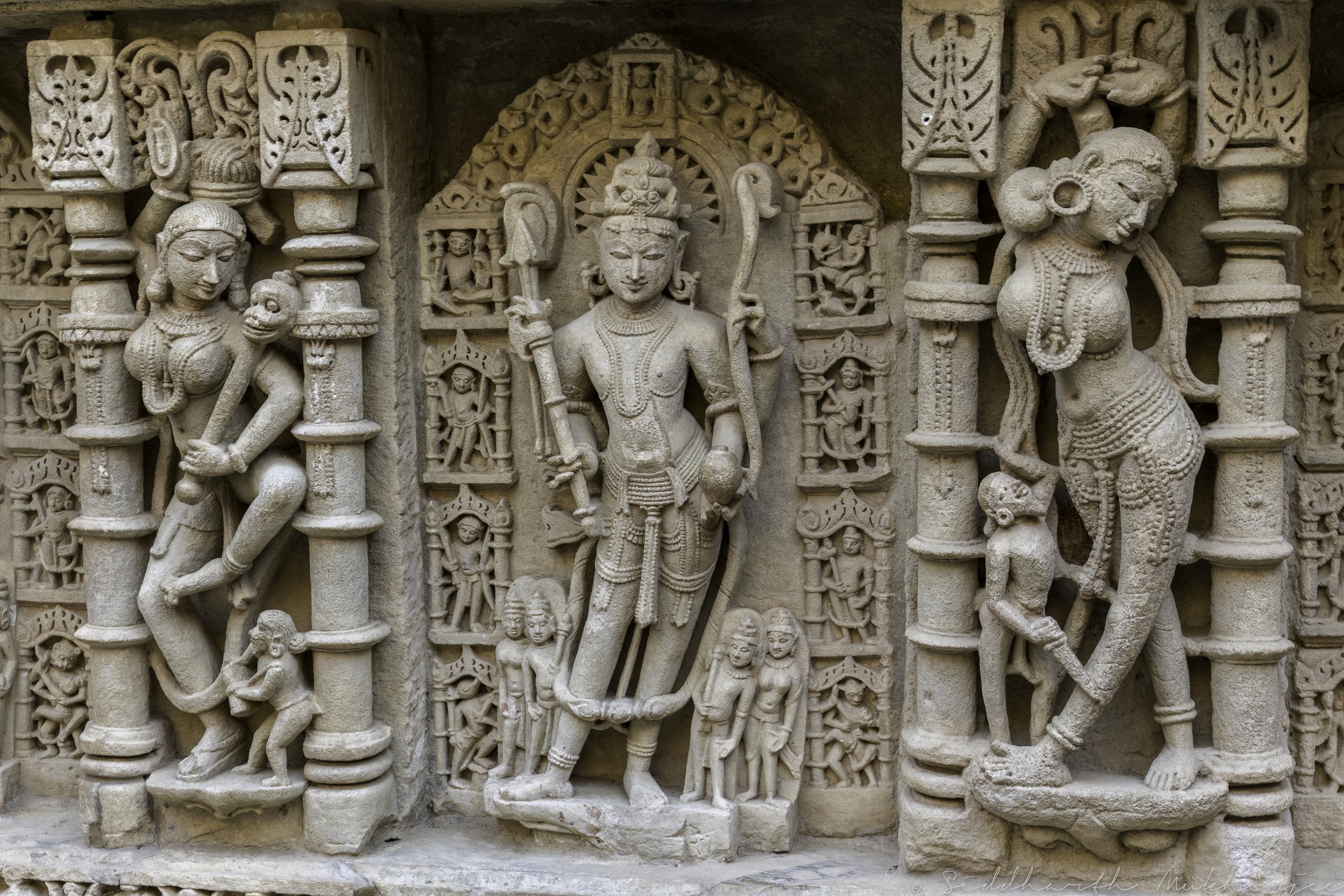
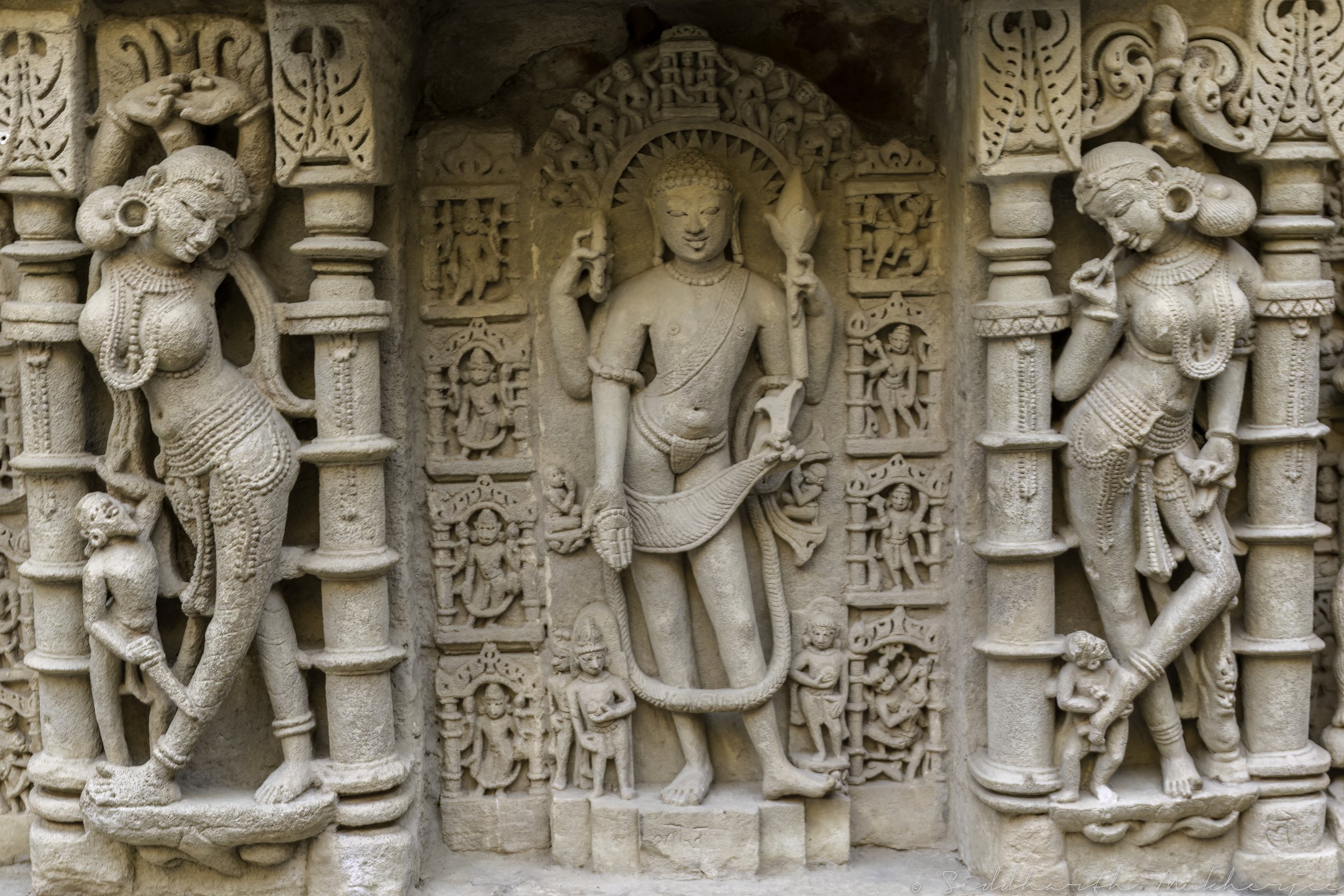
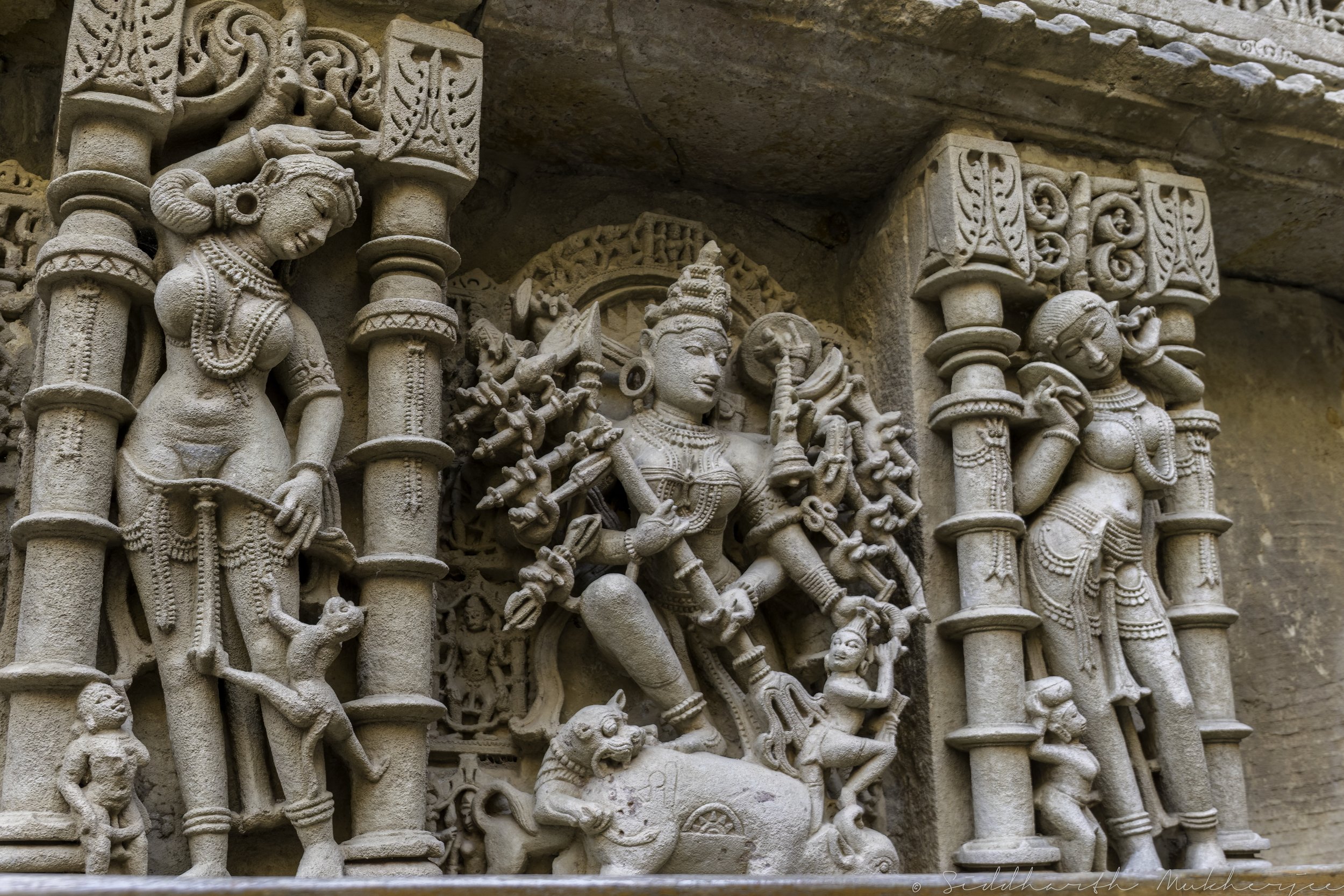
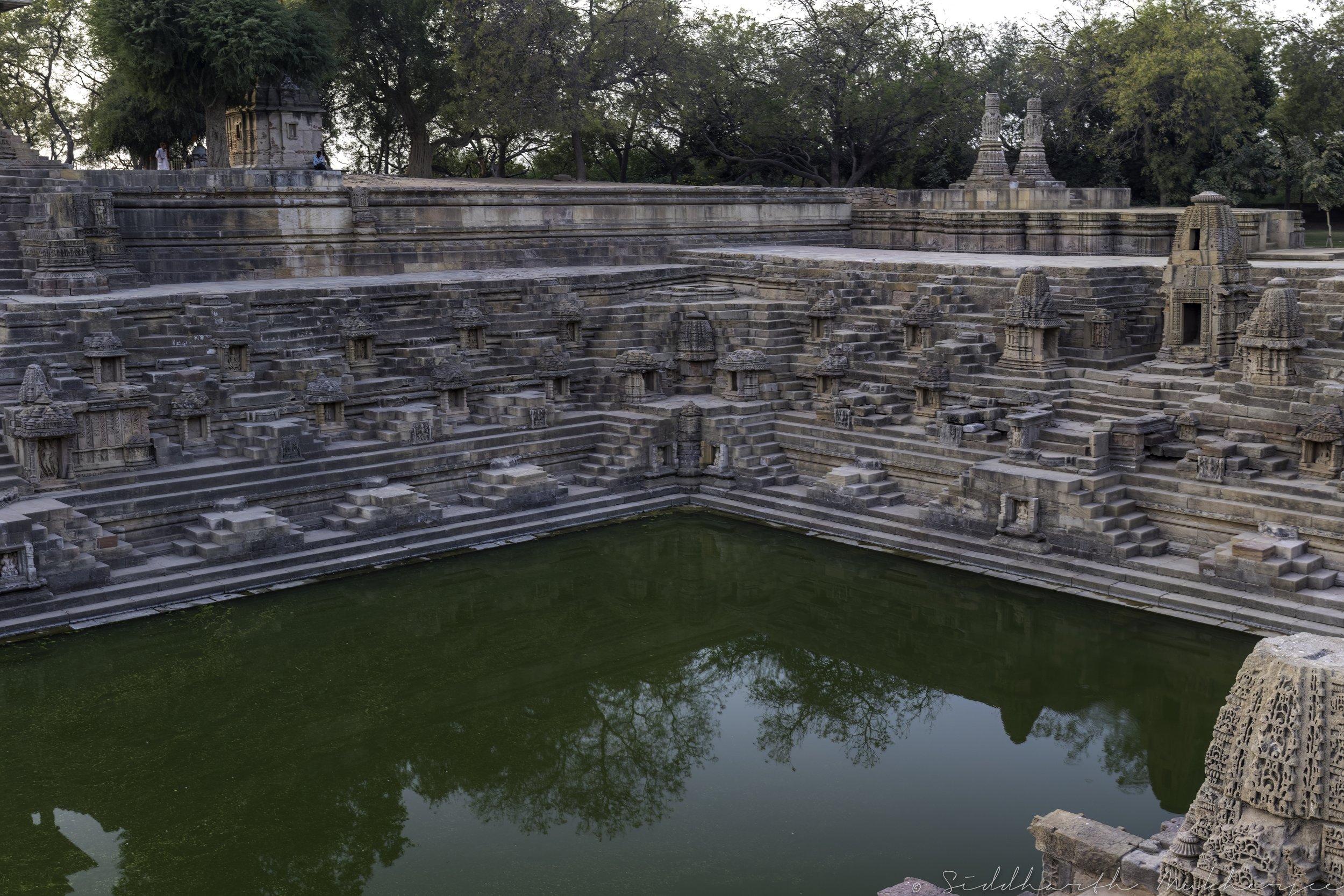
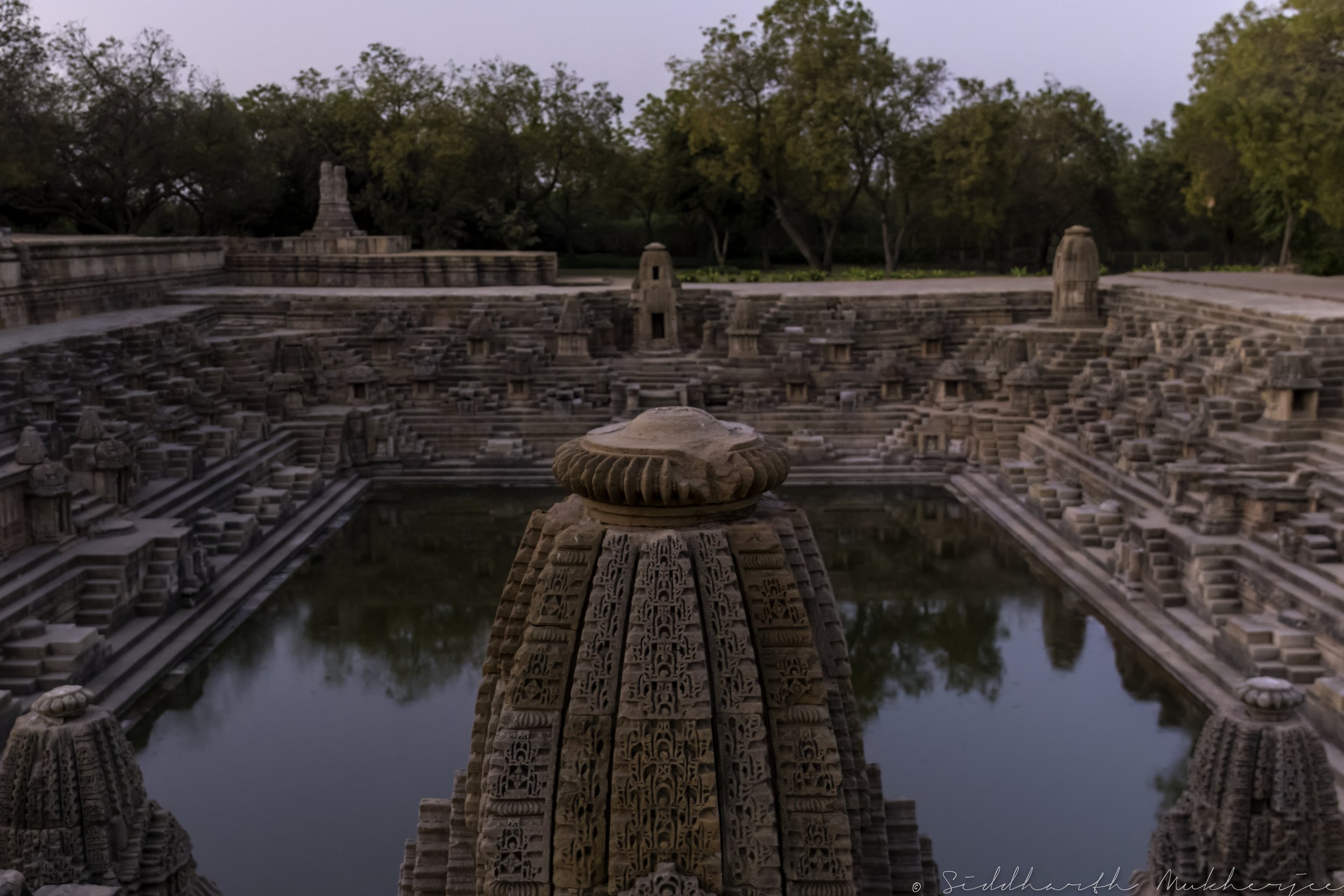
Ancient builders and engineers dug deep trenches into the earth to access dependable and perennial groundwater sources. How they found these sources is a complete mystery. The walls of these trenches were lined with stone blocks, usually without mortar or lined with lime, which in turn created stairs leading down to the water. This also encouraged the inclusion of significant ornamental and architectural features like arches and corridors thus ensuring their survival as monuments. The most intricate examples of such stepwells can be seen in Rajasthan and Gujarat. These stepwells were excavated several stories underground in order to reach the water table, the level at which the soil or rock is always saturated with water. Stylistically varied, they incorporated flights of stairs leading from the ground level down to the water, and many in Gujarat also functioned as Hindu temples that featured column-supported shade pavilions and elaborate stone carvings. Islamic versions had more-sedate adornment and often incorporated arched side-niches. Both architectural types had cylinder wells where water-gathering pulley systems were sometimes employed. A stepwell is generally located in two places - as an extension or part of a temple, and/or the outskirts of a village. When a stepwell is associated with a temple or a shrine, it is either at the opposite wall of it or in front of the temple. Sindhvai Mata stepwell in Patan, Mata Bhavani stepwell in Ahmedabad, and the Ankol Mata stepwell in Davad serve as a great example of the stepwells that house shrines. Interestingly enough there was a shrine to the lord Ganesha at the Bansilalpet Stepwell too which has been moved to a new location near the peripheral wall and if you look closely at the panorama of the stepwell from the first level, focus on the left corner and just below, a small shrine to lord Ganesha can also be seen.
Of the thousands of stepwells that once proliferated throughout India, most were abandoned as a result of modernisation and falling water tables. In many instances local communities neglected their upkeep, allowing the stepwells to silt up, fill with garbage, or generally crumble into ruin. And as icing on the cake, during the British rule between 1858 and 1947, many stepwells were destroyed after they were deemed unhygienic breeding grounds for disease. But the present-day water crisis across the country, however, has renewed interest in stepwells, and the governments of many states have begun to restore some of them. This is a long and continuous exercise where the onus will lie with the local community to maintain the stepwells in their neighbourhoods.
The Bansilalpet Stepwell is one such monument where the bottom of the stepwell, not currently visible, is an exact replica of the stepwell at the Thousand Pillar Temple in Hanamkonda, Warangal.
Some of the notable stepwells in Telangana are the Sitarambagh Temple stepwell in Hyderabad, the Ramalayam Temple in Devar (Shamirpet Mandal) - home to a bijou stepwell, the Elgandal Stepwell or Naganna Baavi in Karimnagar, the Badi Baoli, Hamam Baoli, Baug Baoli, Mashriqi (eastern) Baoli, Maghribi (western) Baoli and Eidgah Baoli inside the Qutb Shahi tombs complex in Hyderabad, Sri Seetha Rama Chandra Swamy temple stepwell in Ammapally - which is probably the only ramalayam without Hanuman, Lingampet Stepwell in Lingampet, the Kichanapalle Stepwell and the recently renovated Bapughat Stepwell in Langar Houz on the banks of the Musi. These are but a few of the many in the state.
The basic structure of a stepwell consists of two sections: a vertical shaft down to the ground water and the surrounding inclined subterranean passageways, chambers and steps providing access to the well. The galleries and chambers surrounding these wells were often intricately carved with elaborate detail and became cool, quiet retreats during the hot summers. For centuries, these stepwells provided pure and cool water for drinking, washing, bathing, and the irrigation of crops. They also served as sanctuaries for caravans, pilgrims, and other travellers during the heat of the day or overnight. Commissioned by royal, wealthy, or powerful patrons, they were complex structures that showcased a mastery of engineering, architecture and art.
When we talk of Hindu architecture in the eastern Deccan the influence of the Kakatiya dynasty is undeniable. The Kakatiyas were an Indian dynasty that ruled between the 12th and 14th centuries and their territory comprised much of the present day Telangana and Andhra Pradesh, and parts of eastern Karnataka, northern Tamil Nadu, and southern Odisha. Their capital was Orugallu, now known as Warangal. According to an interpretation of the Mangallu and the Bayyaram inscriptions, the Kakatiyas were not just Rashtrakuta vassals, but also a branch of the Rashtrakuta family. Early Kakatiya rulers served as feudatories to Rashtrakutas and Western Chalukyas for more than two centuries and following the dissolution of the Chalukya empire into four parts in the 11th century, the areas around the present day Hyderabad and Secunderabad came under the control of the Kakatiya dynasty (1158–1310), ruling from Warangal, 148 km northeast of modern Hyderabad. They assumed sovereignty under Prataparudra I in 1163 CE by suppressing other Chalukya subordinates in the Telangana region. Ganapati Deva (1199–1262) significantly expanded Kakatiya lands during the 1230s and brought under Kakatiya control the Telugu-speaking lowland delta areas around the Godavari and Krishna rivers. Ganapati Deva was succeeded by Rudrama Devi ( 1262–1289) - one of the few notable queens in Indian history. Marco Polo, who visited India around 1289–1293, made note of Rudrama Devi's rule and nature in flattering terms. She successfully repelled the attacks of the Yadavas (Seuna) of Devagiri.
The Kakatiyas unified the distinct upland and lowland cultures of the Telugu lands, which brought into being a feeling of cultural affinity between those who spoke the Telugu language. The Kakatiya period also saw the construction of reservoirs for irrigation in the uplands called "tanks" many of which are still used today. The Kakatiyas were egalitarian in nature and anyone, regardless of birth, could acquire the nayaka title that denoted the warrior status. They recruited peasants into the military which resulted in a new warrior class and provided social mobility. The Kakatiya era also saw the development of a distinct style of architecture which improved and innovated upon the existing modes. Most notable examples are the Thousand Pillar Temple in Hanamkonda, Ramappa Temple in Palampet, Warangal Fort, Golconda Fort and Kota Gullu in Ghanpur.
Then came the time of the muslim influence starting with the raids of Alauddin Khalji in 1303. Alauddin Khalji was the emperor of the Delhi Sultanate and wanted to subjugate the powerful Kakatiyas. After the successful siege of Warangal in 1310, Prataparudra II was forced to pay annual tribute to Delhi. Another attack by Ulugh Khan (i.e. Tughluq) in 1323 saw stiff resistance by the Kakatiyan army, but they were eventually defeated. The demise of Kakatiya dynasty resulted in confusion and anarchy under alien rulers for sometime, before Musunuri Nayaks united the various Telugu clans and recovered Warangal from the Delhi Sultanate.
The Deccan plateau of south-central India became home to a succession of highly cultured Muslim kingdoms with rich artistic heritage. Under their patronage in the 16th and 17th centuries, foreign influences - notably from Persia (Iran), Ottomans (Turkey), eastern Africa, and Europe - combined with ancient and prevailing Indian traditions to create a distinctive Indo-Islamic art and culture. The architectural styles developed by the Sultans of the Deccan plateau manifested in their full glory and splendour in Bijapur, Bidar, Gulbarga, and Hyderabad, are motivated by Persian and Ottoman designs and plans. I have a guest blog by my friend and architecture photographer, Kompella Phani Kumar, on the Ibrahim Rauza - the tomb that inspired the Taj Mahal - which talks about the golden age of Bijapur. The population of the Deccan plateau by the 16th & 17th century included immigrants from Central Asia and Iran, African military slaves, native-born Hindu and Muslim nobles, and European missionaries, merchants, and mercenaries. As a result, it boasted one of the most cosmopolitan societies of the early modern world and one of the best examples of the art from this time is Bidri.
A two point perspective of the corridors on the first level of the Bansilalpet Stepwell.
The Bansilalpet stepwell is believed to have been built in the 16th or 17th century primarily meant to access, manage and conserve ground water. The exact age of this stepwell made of stone masonry and lime plaster with architectural features reflecting an amalgamation of styles from the Kakatiyas to the Nizams is not known as no records seem to exist on its commission and construction. This medieval age structure is beautifully detailed, ornamented and stands as a testimony to exquisite craftsmanship and architectural heritage. This six-layer stepwell bears the indefatigable mark of the Kakatiyas, the artistic touch of the Nizams and the stamp of the British Empire. Earlier known as Naganah Kunta, this freshwater stepwell from the Kakatiyan period, during the rule of the British, became a part of a planned model village conceptualised and built by the British resident Terence Humphrey Keyes funded by Seth Bansilal after whom the stepwell and village came to be known.
1854 Pharoah Map or Plan of the City of Secunderabad, Telangana, India
Known at the time as Naganah Kunta the stepwell was historically included in a garden of tamarind and palmyra trees during the British period. It also sees mention as such in an 18x15.5 inch 1854 plan of Secunderabad by Pharoah and Co. covering in beautiful detail the British Cantonment at the time noting streets, the bazar, military parade grounds, tanks, fields, streams and topography. The map extends from the centuries old Hussain Sagar Lake in the south to what later became Bowenpally in the north. The map includes six specific areas and a reference key along the right border listing the locations noted in each area. The area of the Bansilalpet Stepwell and the garden of tamarind and palmyra trees is clearly marked as Naganah’s Garden just below the shaded area of the General Bazar between Picquet and New Parsee Burial Place.
Separated from the city of Hyderabad by the man-made Hussain Sagar Lake, Secunderabad is often referred to as the twin city of Hyderabad. Named after the third Nizam - Mir Akbar Ali Khan Sikander Jah, Asaf Jah III of the Asaf Jahi dynasty, Secunderabad was established in 1806 as a British cantonment after the British East India Company’s troops were asked to move out of the city to a cantonment. Although today both the cities are together referred to as the twin cities, Hyderabad and Secunderabad have different histories and cultures, with Secunderabad having developed directly under British rule until 1948, and Hyderabad as the capital of the Nizams' princely state of Hyderabad. Today Secunderabad is an integral part of the Hyderabad metropolis and continues to be one of the largest cantonments in India, with a large presence of army and air force personnel.
The map itself was engraved by John, Alexander & Charles Walker - known collectively as J & C Walker - and issued as plate number 52 by Pharoah and Company in their 1854 atlas of Southern India. I have purchased a copy of the map and reproduced here on the right. Click on the map to open it and zoom in to view the details especially just below the shaded General Bazar area.
The Nizams were originally Mughal-appointed governors who took up the position since 1724. Hyderabad was established in 1591 by Mohammed Quli Qutb Shah extending the capital beyond the fortified Golconda. The cantonment and its surroundings came to be known as Secunderabad. The second Nizam (1762-1803) had in 1798 signed the Treaty of Subsidiary Alliance with the British, based on which the the latter were allowed to formally settle & establish themselves here in the Hyderabad state. In the 1930’s Terence Keyes developed a well-planned model village around the stepwell. The whole thing was then funded by Seth Bansilal. In January 1938, when the then British Viceroy Victor Hope, 2nd Marquess of Linlithgow (usually referred to as Lord Linlithgow, or simply Linlithgow) visited Hyderabad, he made it a point to visit the Bansilalpet Model Village. Linlithgow was received by among others by Seth Pannalal Bansilal and Seth Goverdhan Lal Bansilal, the sons of Seth Bansilal. The grand ceremonial entrance known as the Bansilalpet Kaman is the entrance to the Bansilalpet Village and is now occupied by shops and small vendors. There is a marker too - the foundation stone that was laid by T. H. Keyes on February 13, 1933. Incidentally the Bansilalpet Stepwell isn’t Terence Keyes’ only contribution to the area. The Keyes High School for Girls, was named after him as he helped Dewan Padma Rao Mudaliar secure land to establish a permanent home for a school established by Venu Gopal Pillai that had six dispersed campuses.
According to an initial study by historians, the well and Kaman may predate the construction of the model village/ residential colony.
Until the 1980s, the step-well functioned as a source of water for people in the surrounding areas. However, after a point, it became a garbage pit which rose up to the height of the ground, hiding the heritage structure underneath it. Mrs. Ramesh told me that the first time she went to look for the well she actually walked past it a few times before her son-in-law finally noticed the pulley system. There were also some destitute families who had built temporary shelters on the site and had been living there for the past two decades. Imagine the plight and picture the pitiable scene where you have families living on a site and people throwing garbage on it on a daily basis. There were plans to build a “goshala” on the site and at some point even a '“Parking Lot” lot was in the works.
The effort that has gone into restoring the stepwell, to what we can only assume was its former glory, is mind boggling. Starting from the discovery of the well by Mrs. Kalpana Ramesh, scoping out the well itself which was a learn as you go process because there was simply no detail available. Co-ordinating with the various government departments - Sanitation, Electricity, District and Zonal Collectorates, Police and many more; navigating the devious discussions with people living in the neighbourhood who, at the outset, were completely against the notion of the stepwell. Obtaining the requisite approvals and permissions which in itself is a humongous task if you understand how the paperwork flows in a country the size of India. The Rainwater Project team was going in blind and could only base their estimates and decisions on facts as they were being discovered after four decades. The people of the neighbourhood knew there was a well present but were unaware of its historical and cultural significance and didn’t quite understand the wholistic vision that was being presented to them - to bring dignity to living - which was the original purpose of designing a model village conceptualised for the poor. I have here a gallery I have curated with the help of Mrs. Ramesh and Venkatesh, her trusted aide, which illustrates the condition the stepwell and its neighbourhood was in prior to the restoration efforts. Looking at the stepwell in its current form it is almost impossible to relate to what was and what it.
The gallery below showcases the raw reality of the area as it was when the stepwell was found. These are raw, unedited pictures taken by Mrs. Ramesh and others from the team.
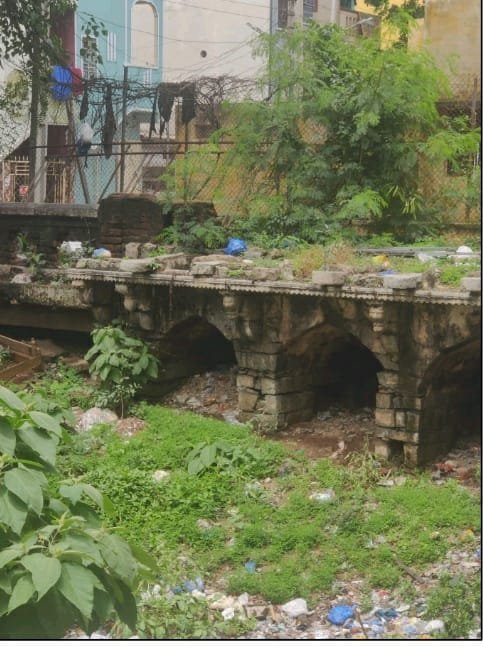
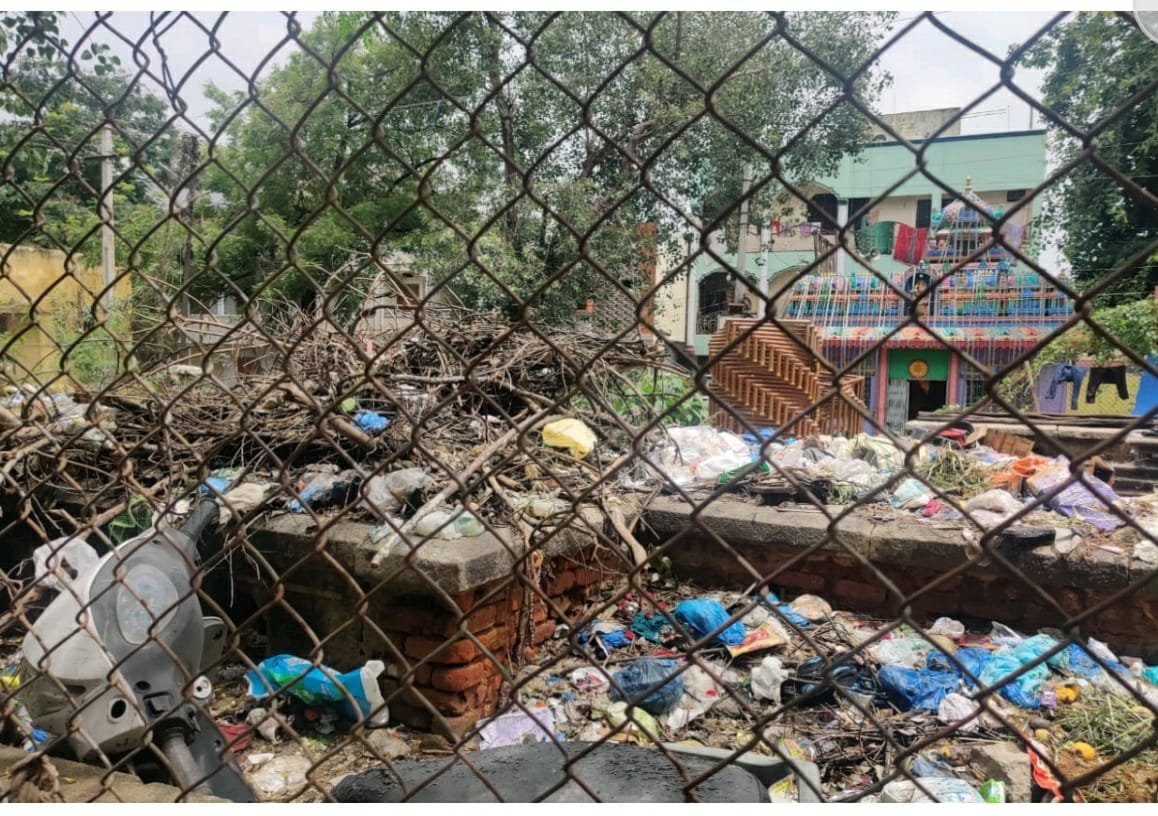
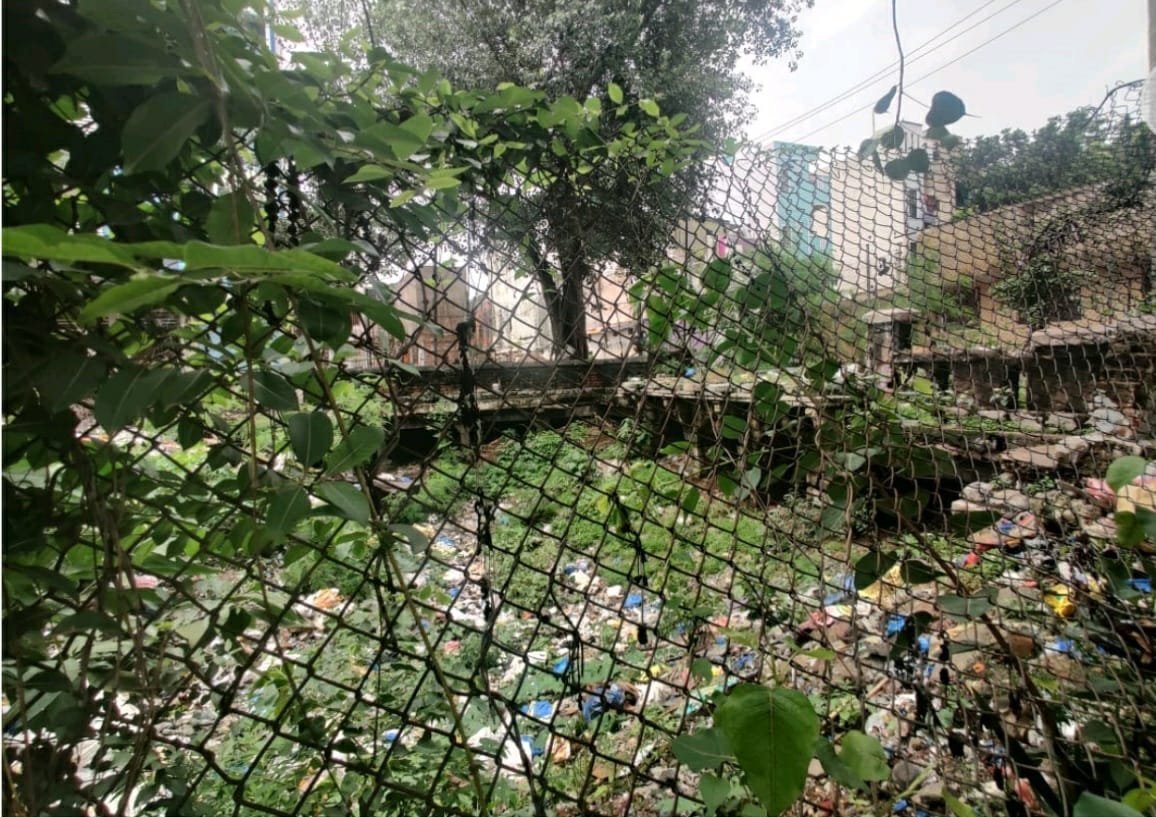
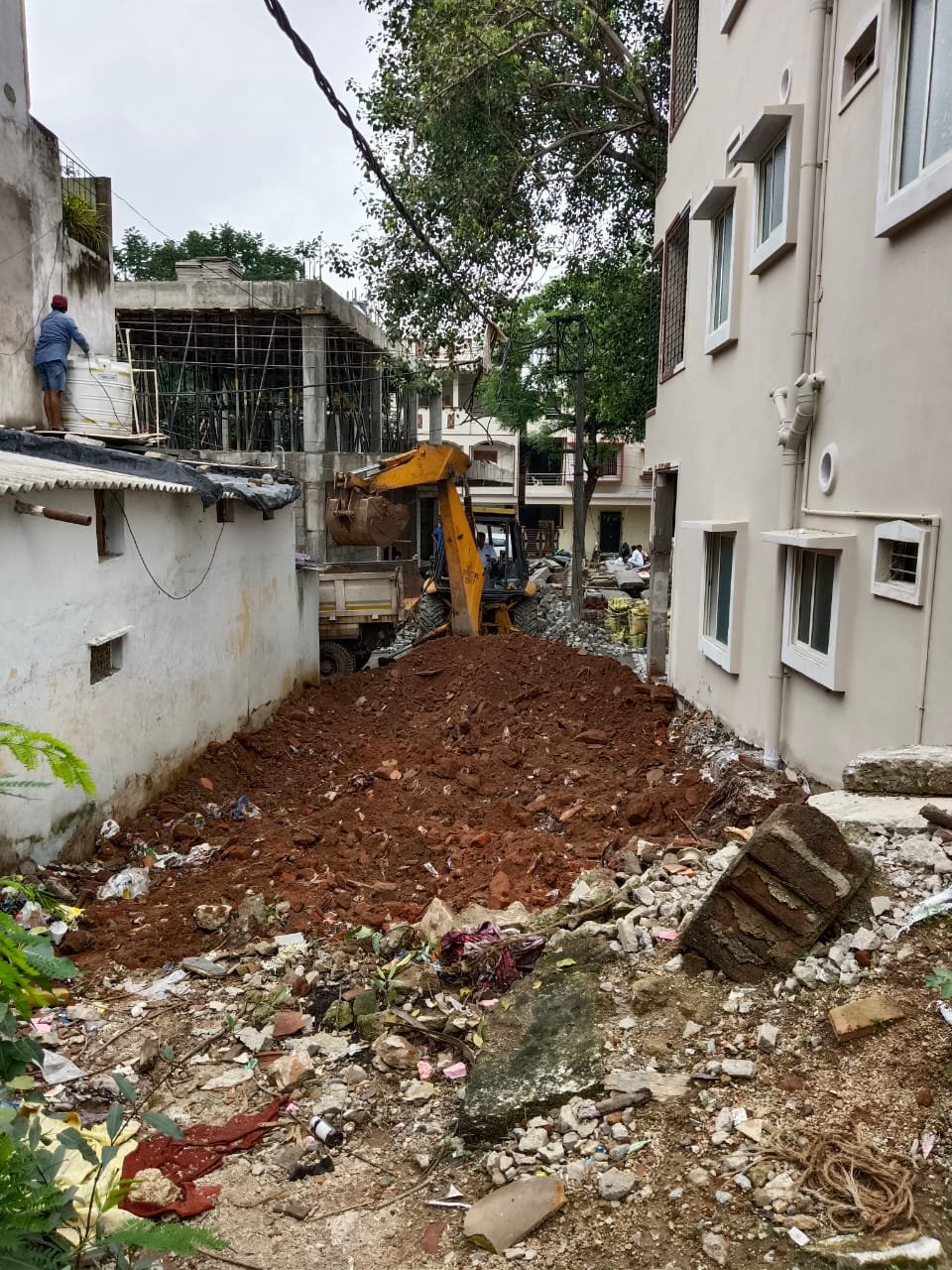
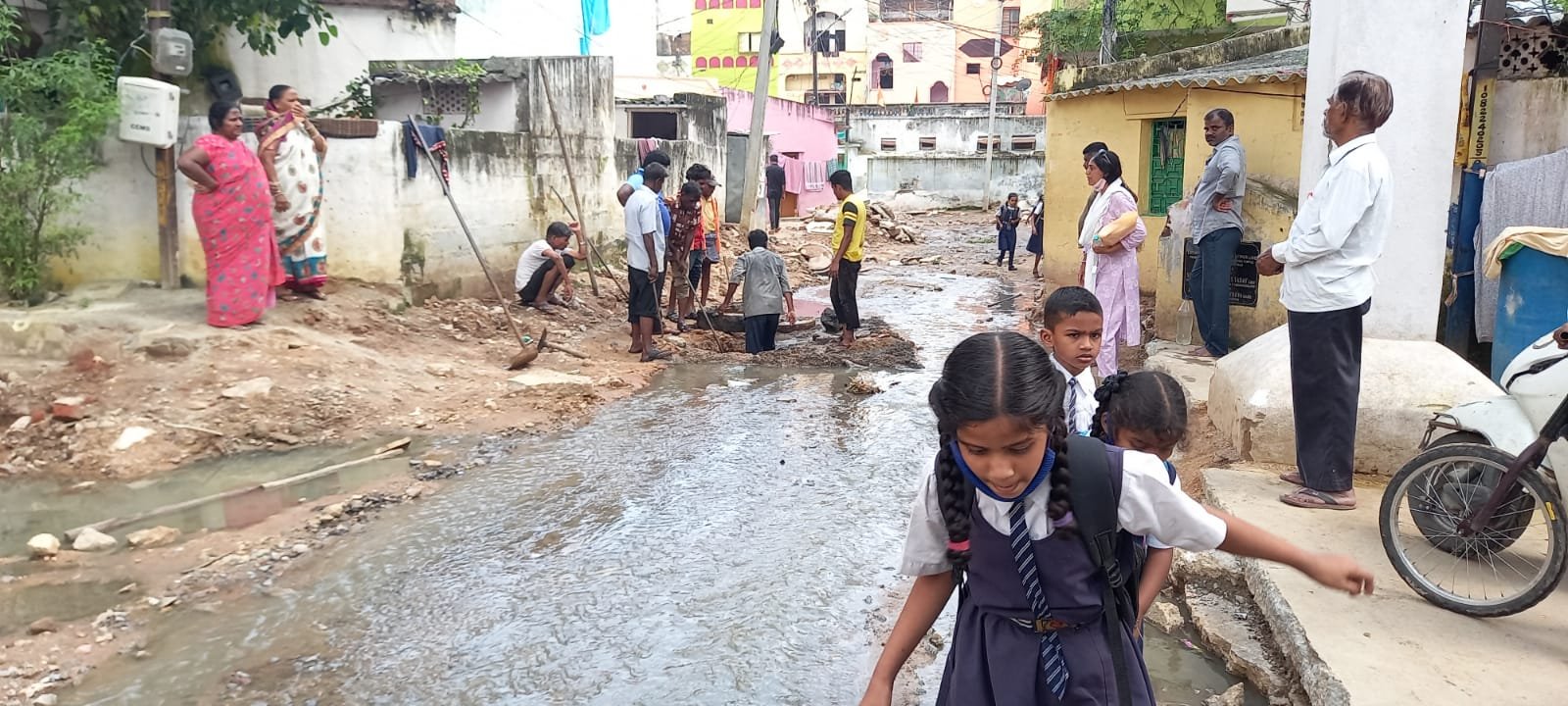
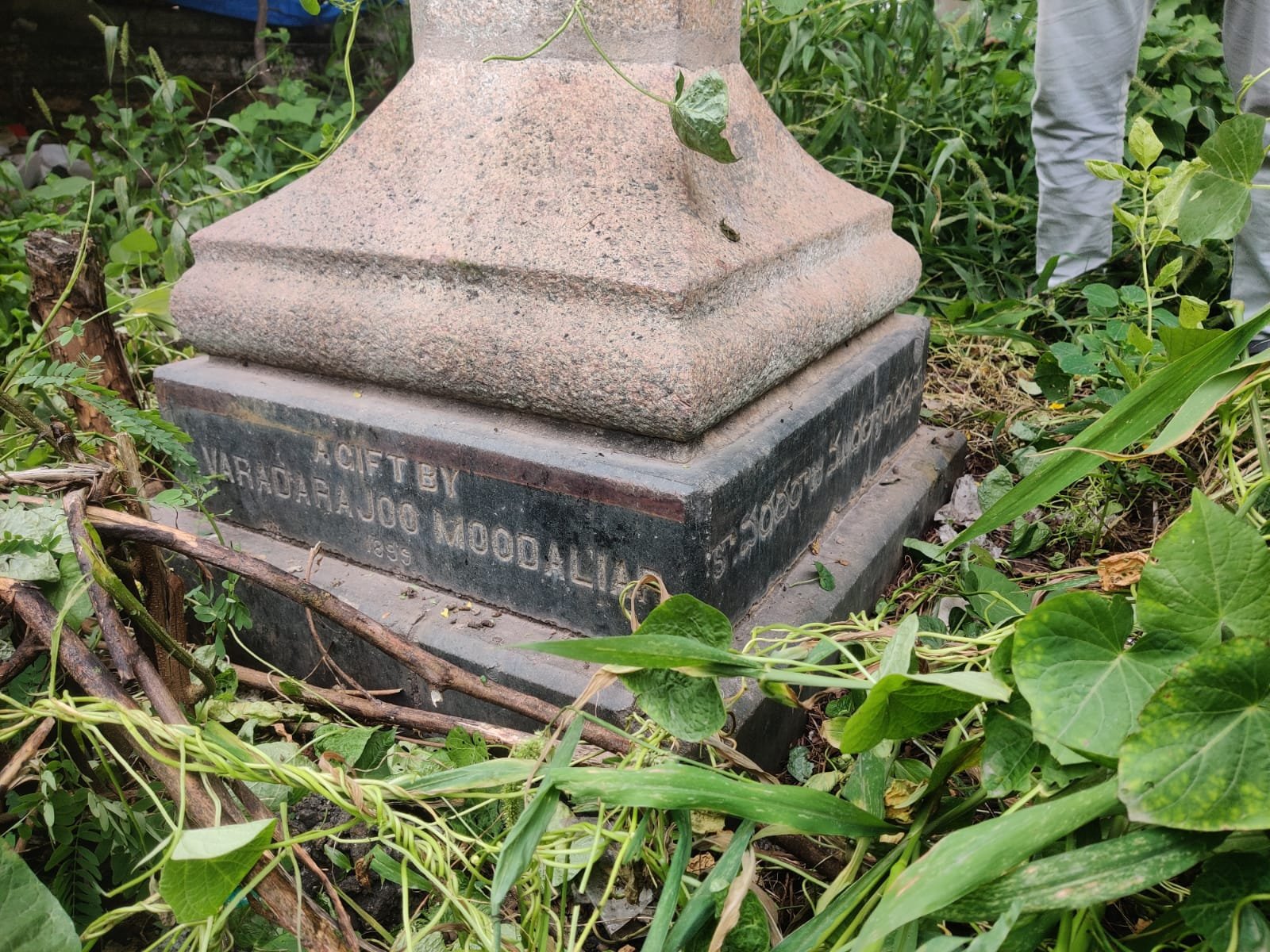

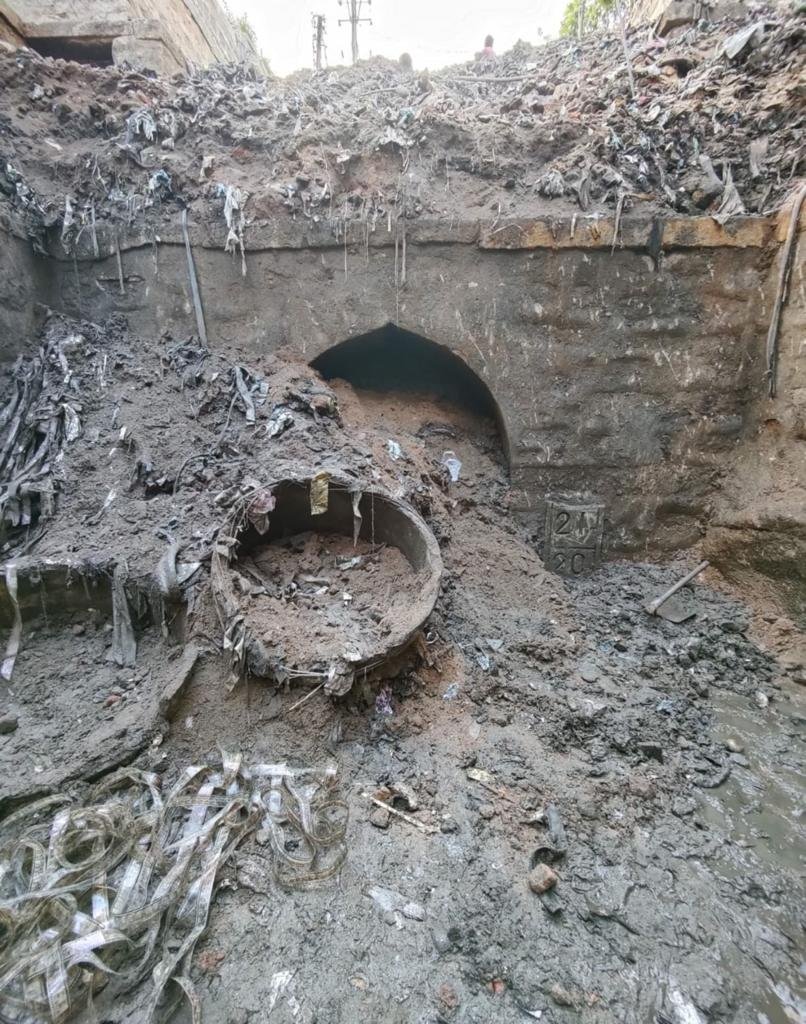
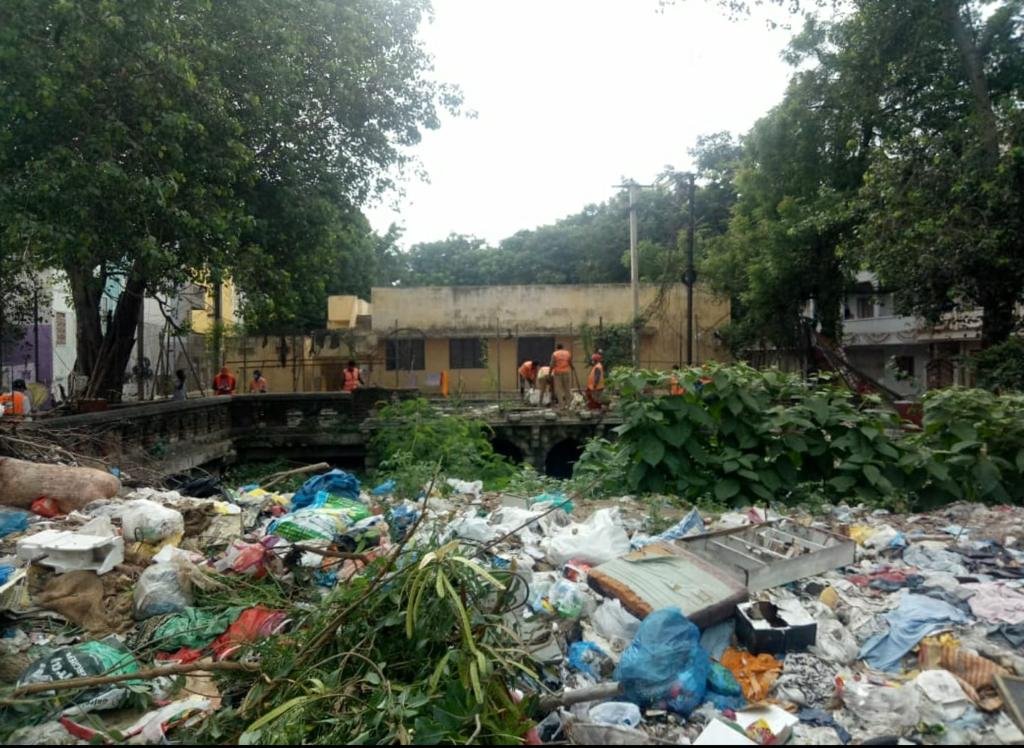
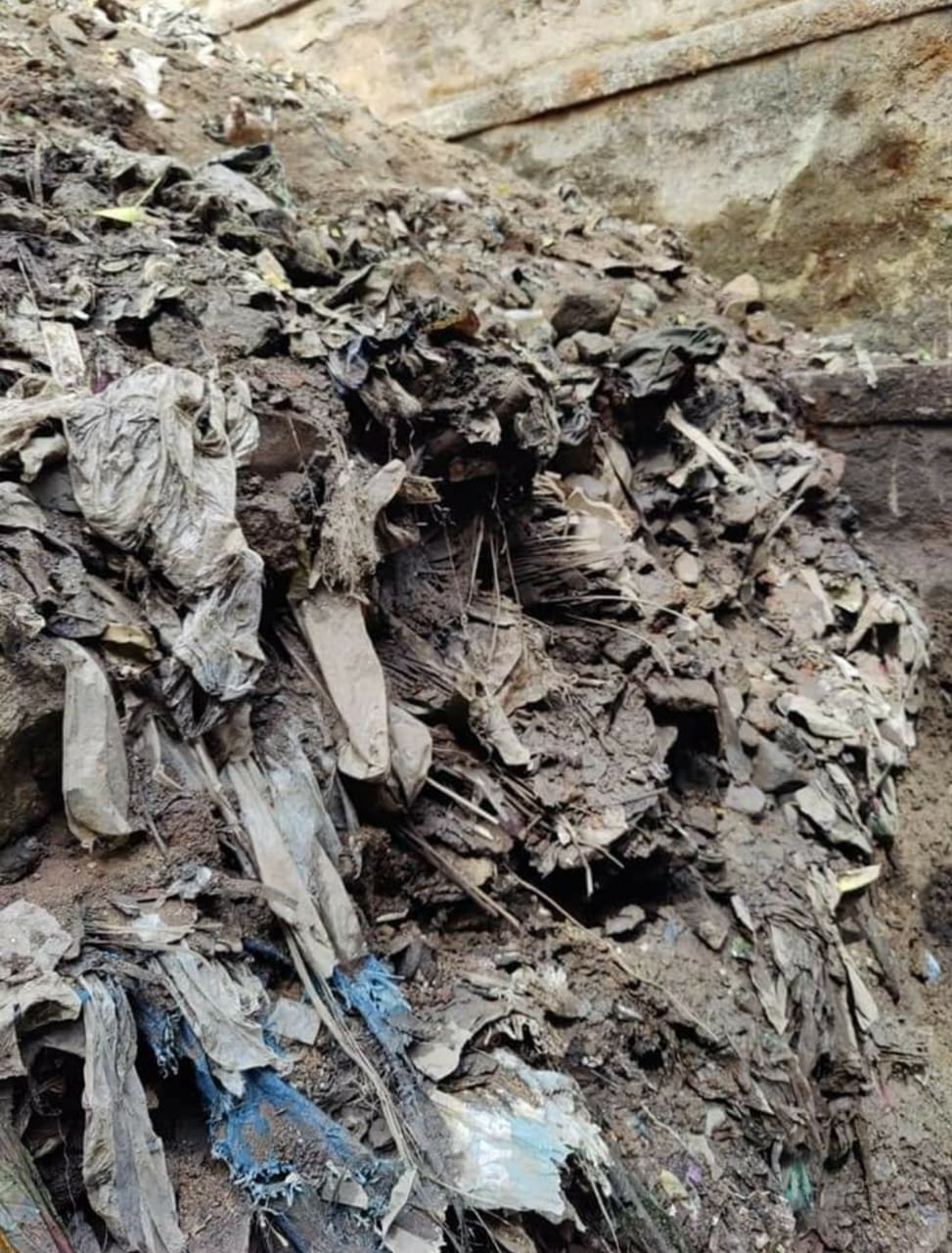
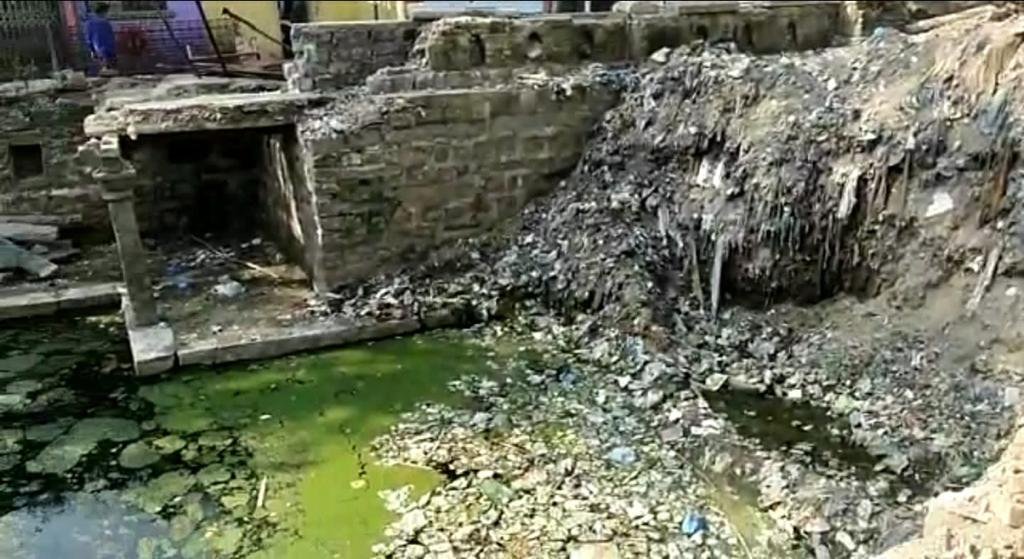
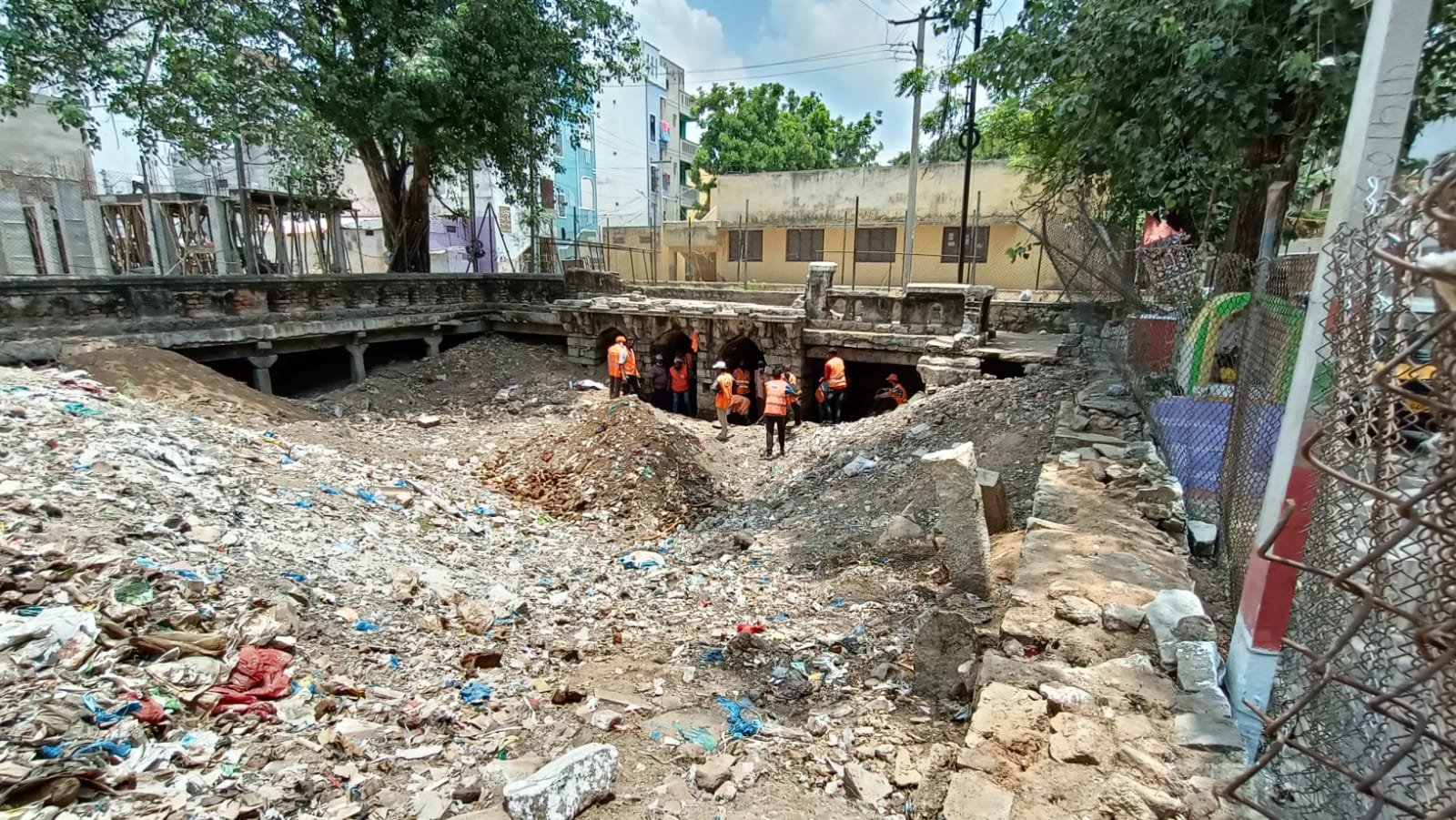
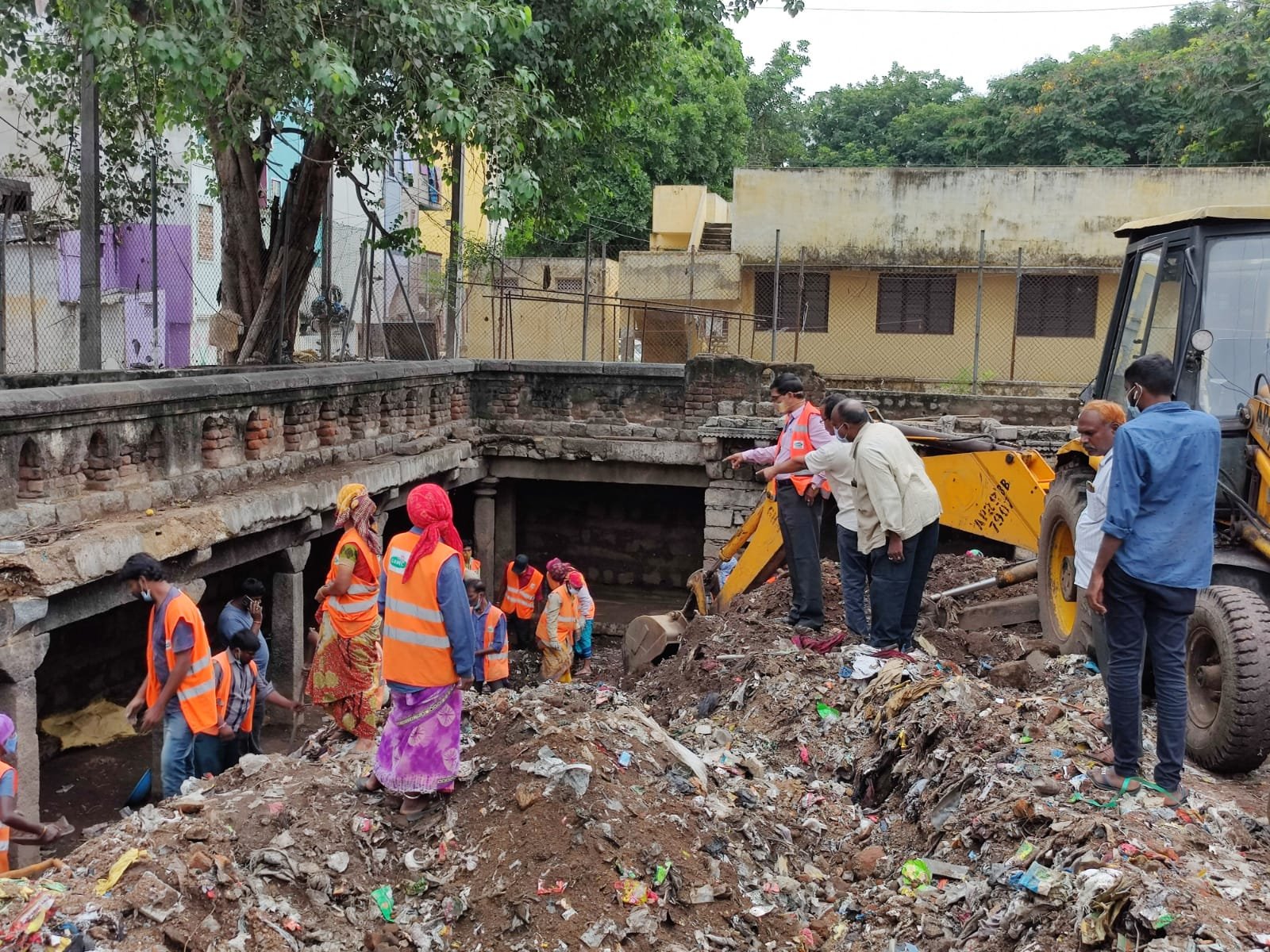
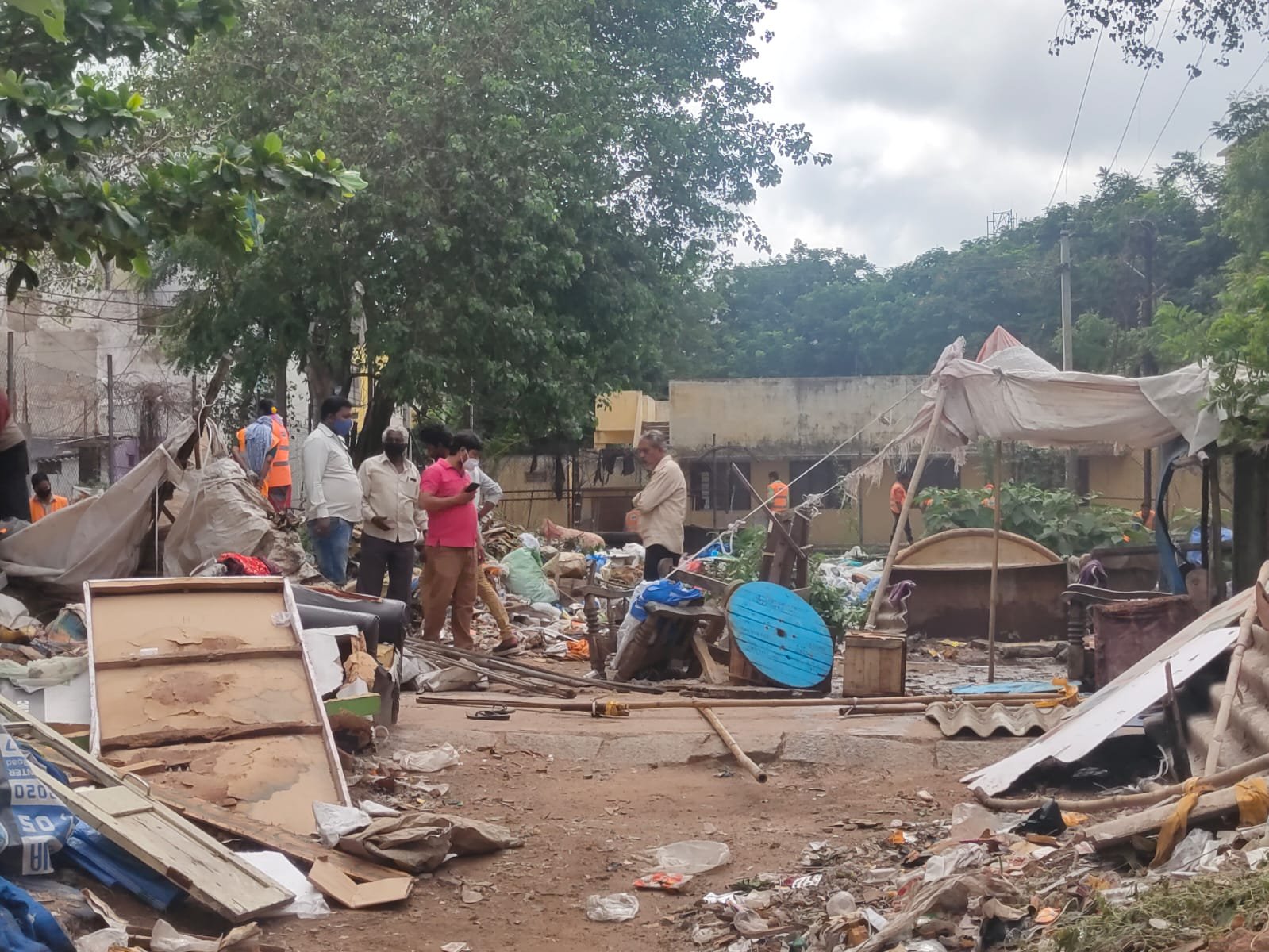

The following gallery includes raw photos of the extremely tedious process of removing the trash and junk accumulated in the well over four decades - over 2000 tonnes. The team initially started with earth movers given the sheer quantity of waste but soon realised that the structure itself could be damaged if they continued. The only other option was to dig and remove the trash by hand. A team comprising mostly of women were put in place - why only women you ask - because the structure was in a fragile state and even the force of a pick wielded by a man could have brought the whole thing crumbling down.
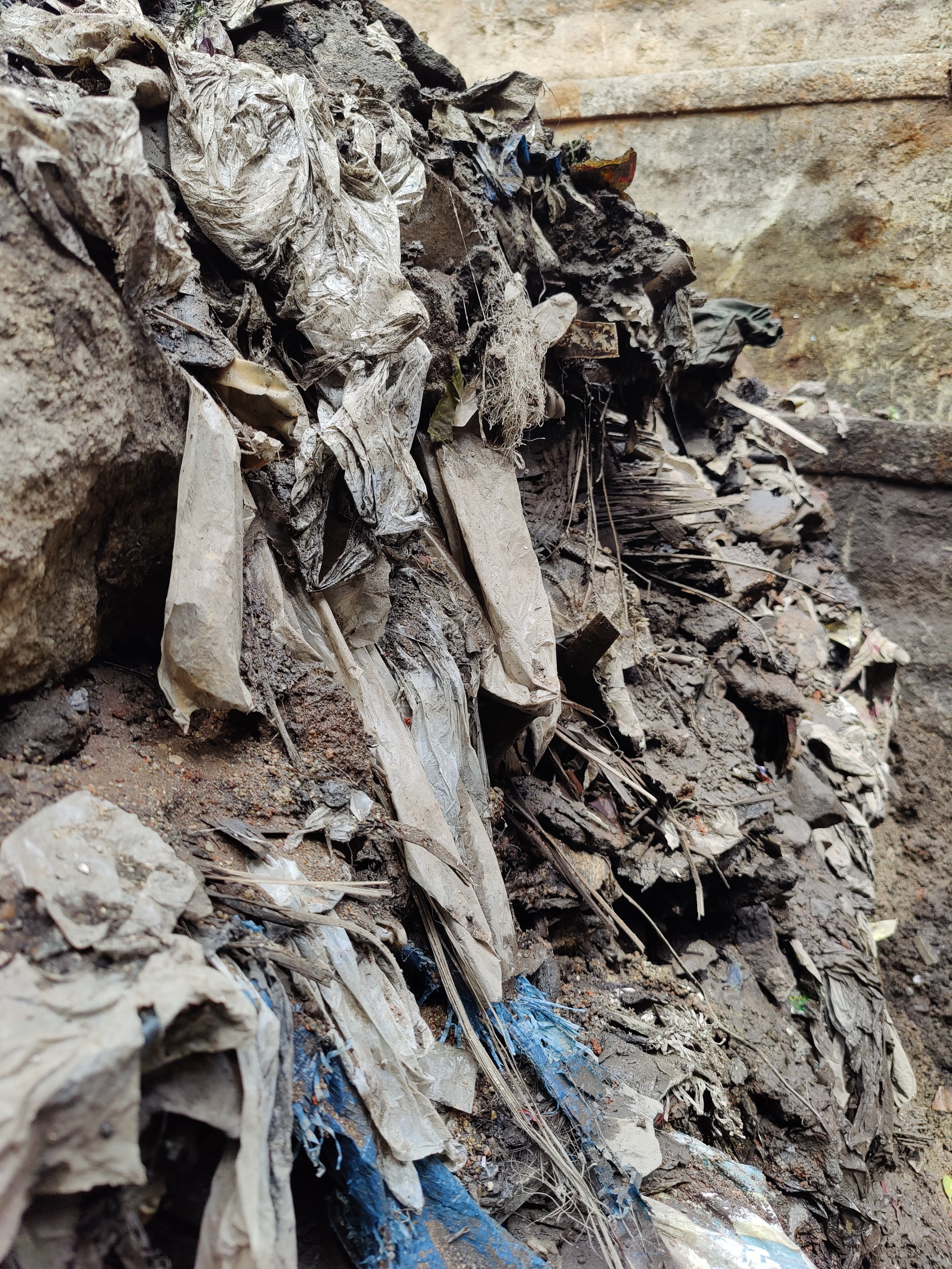
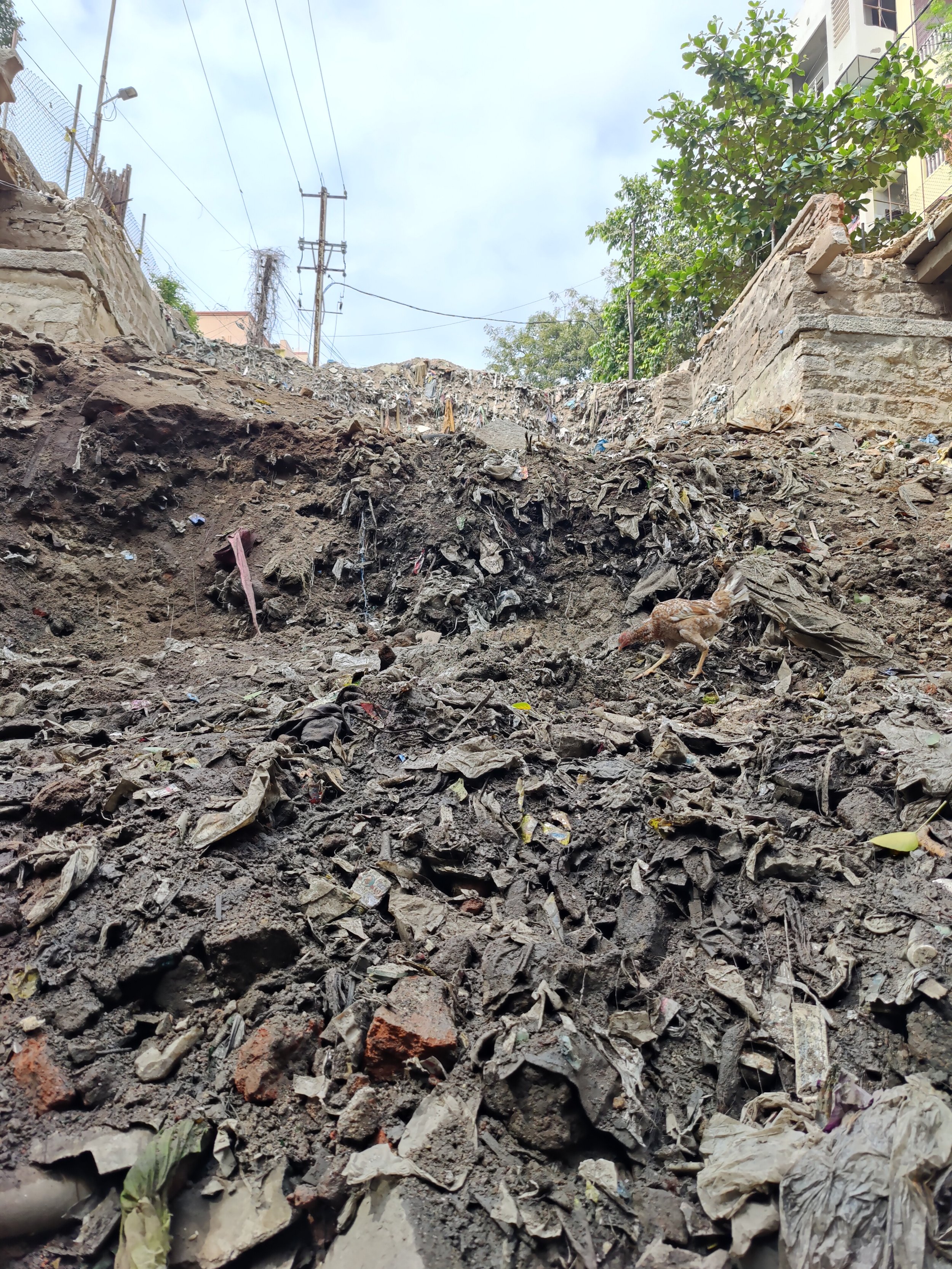
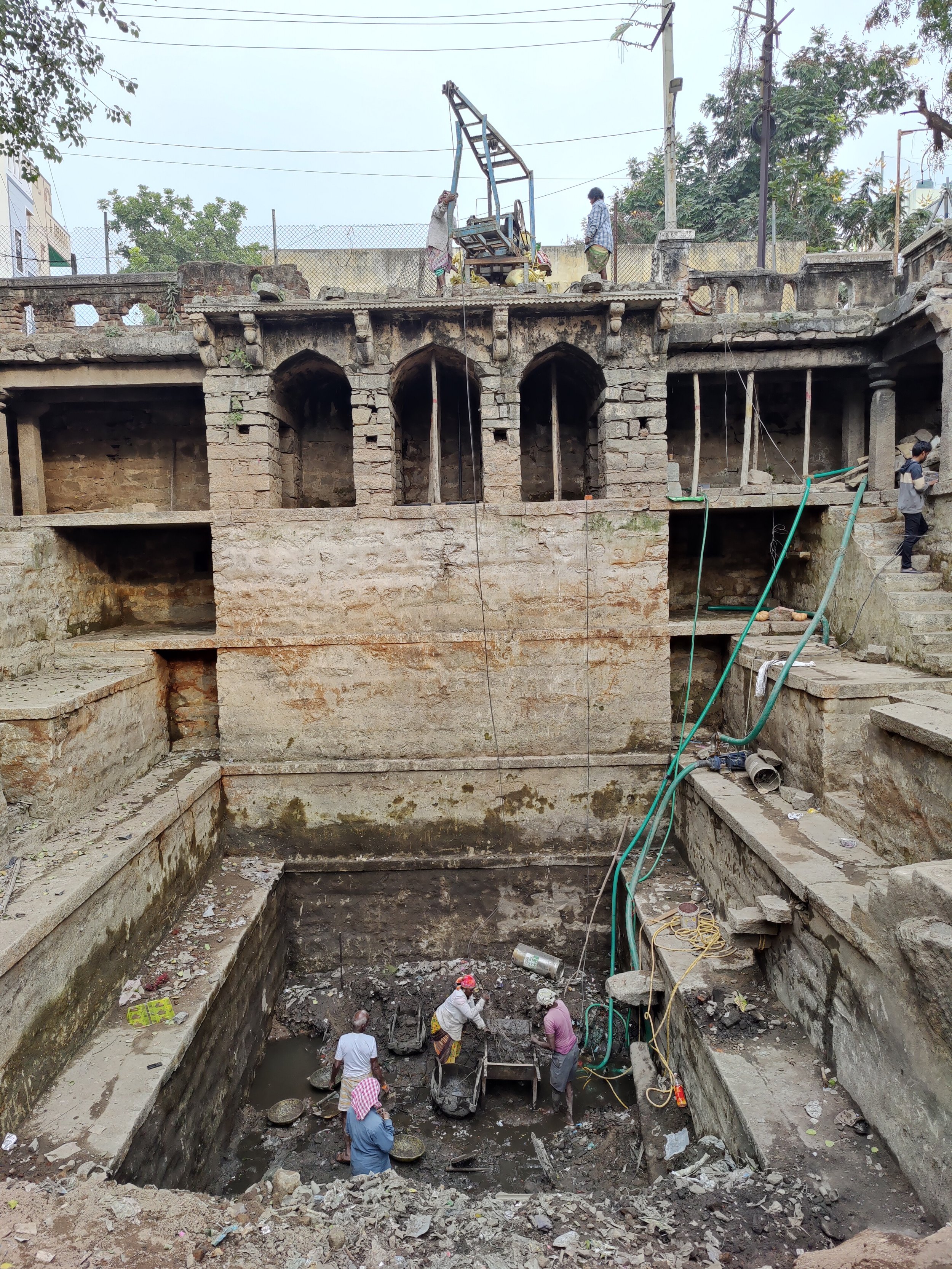
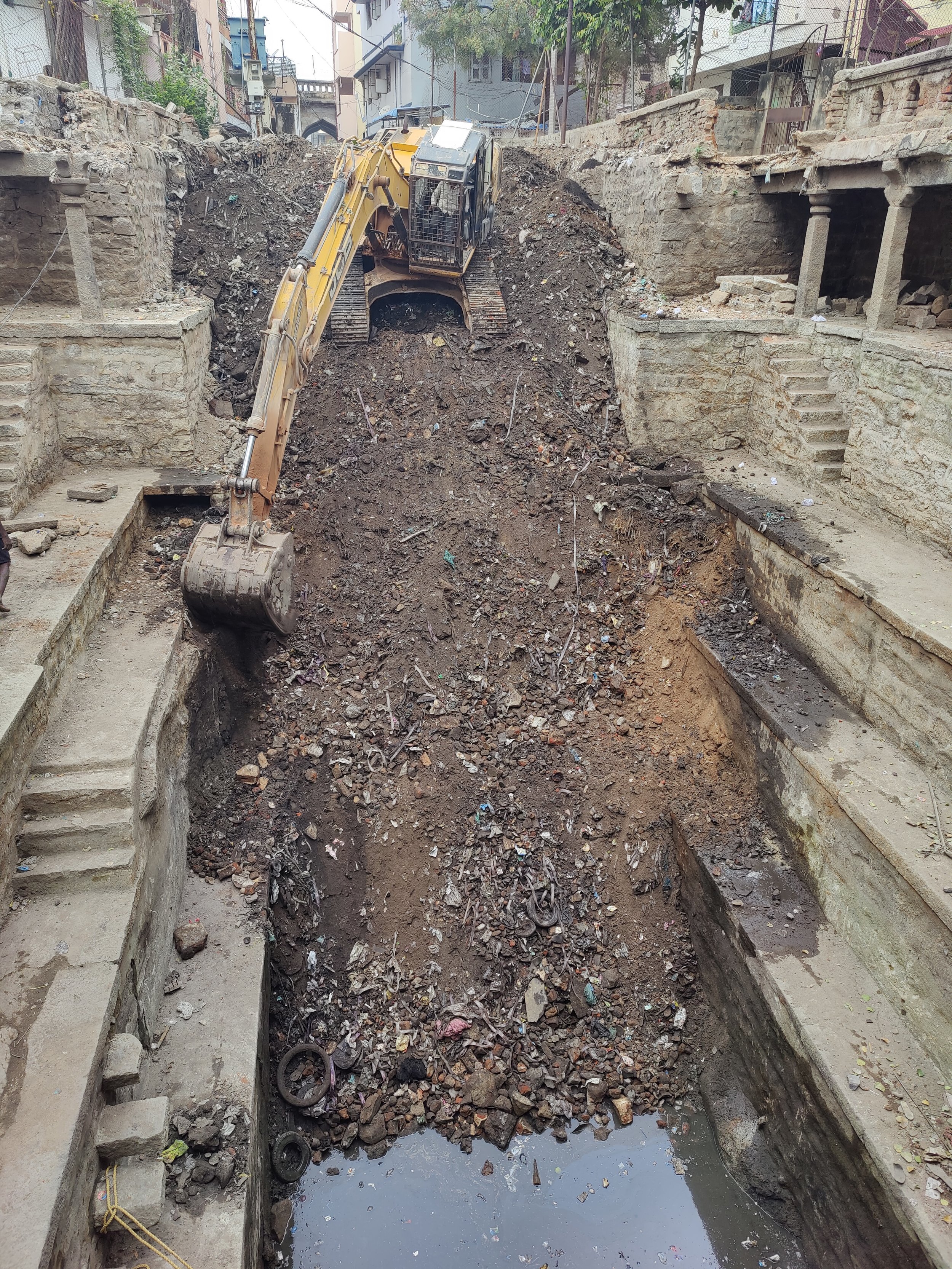
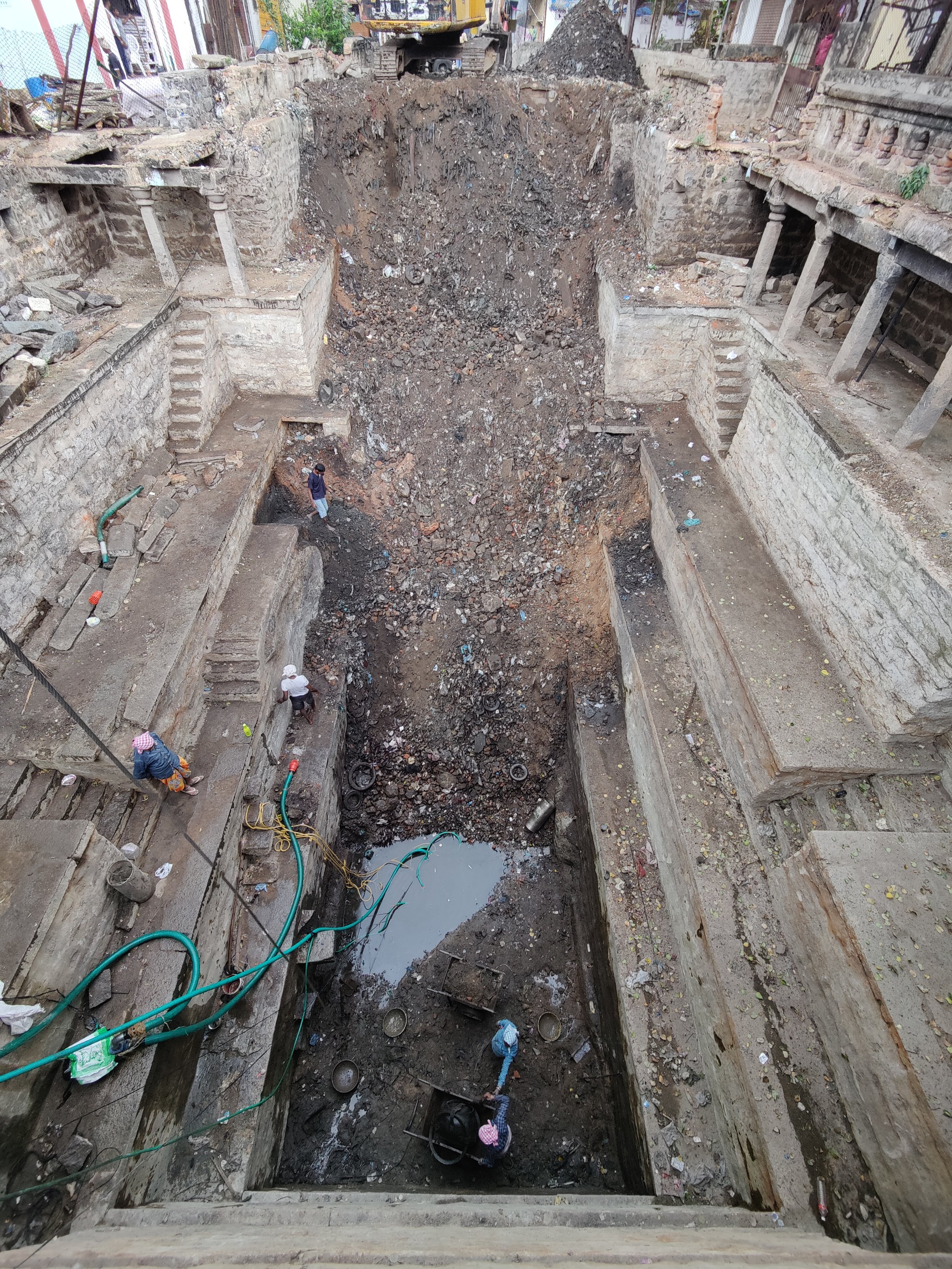
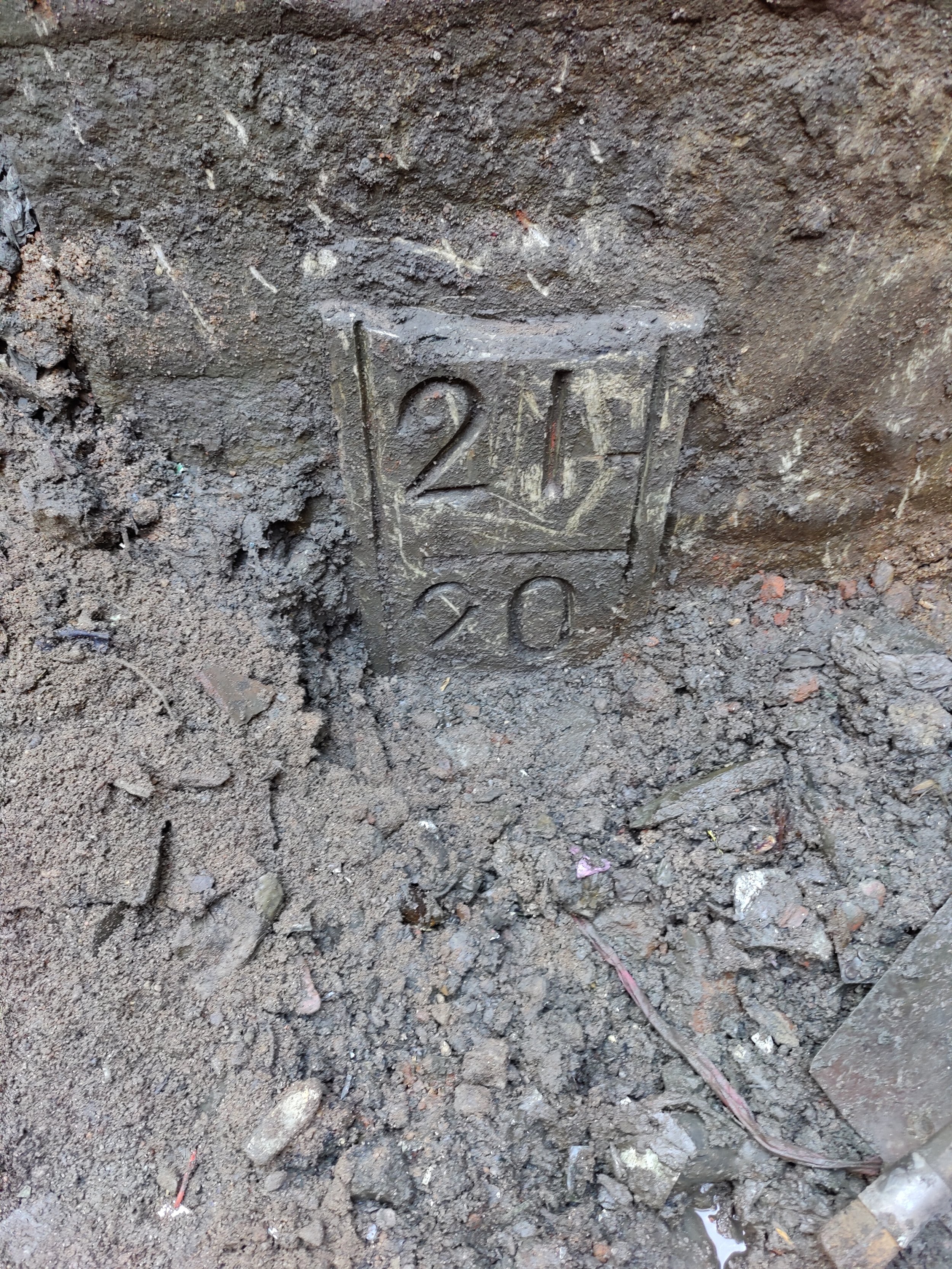
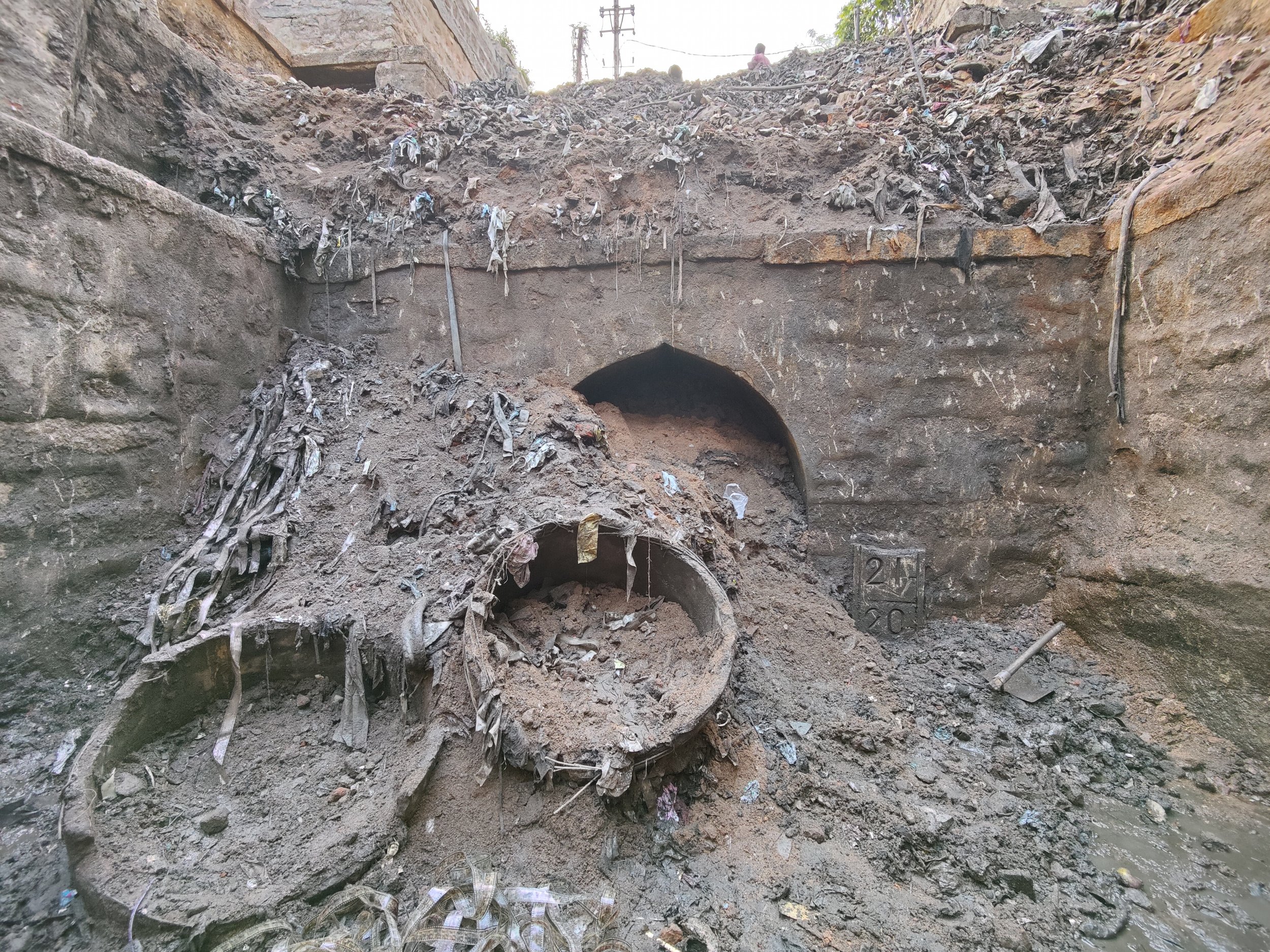
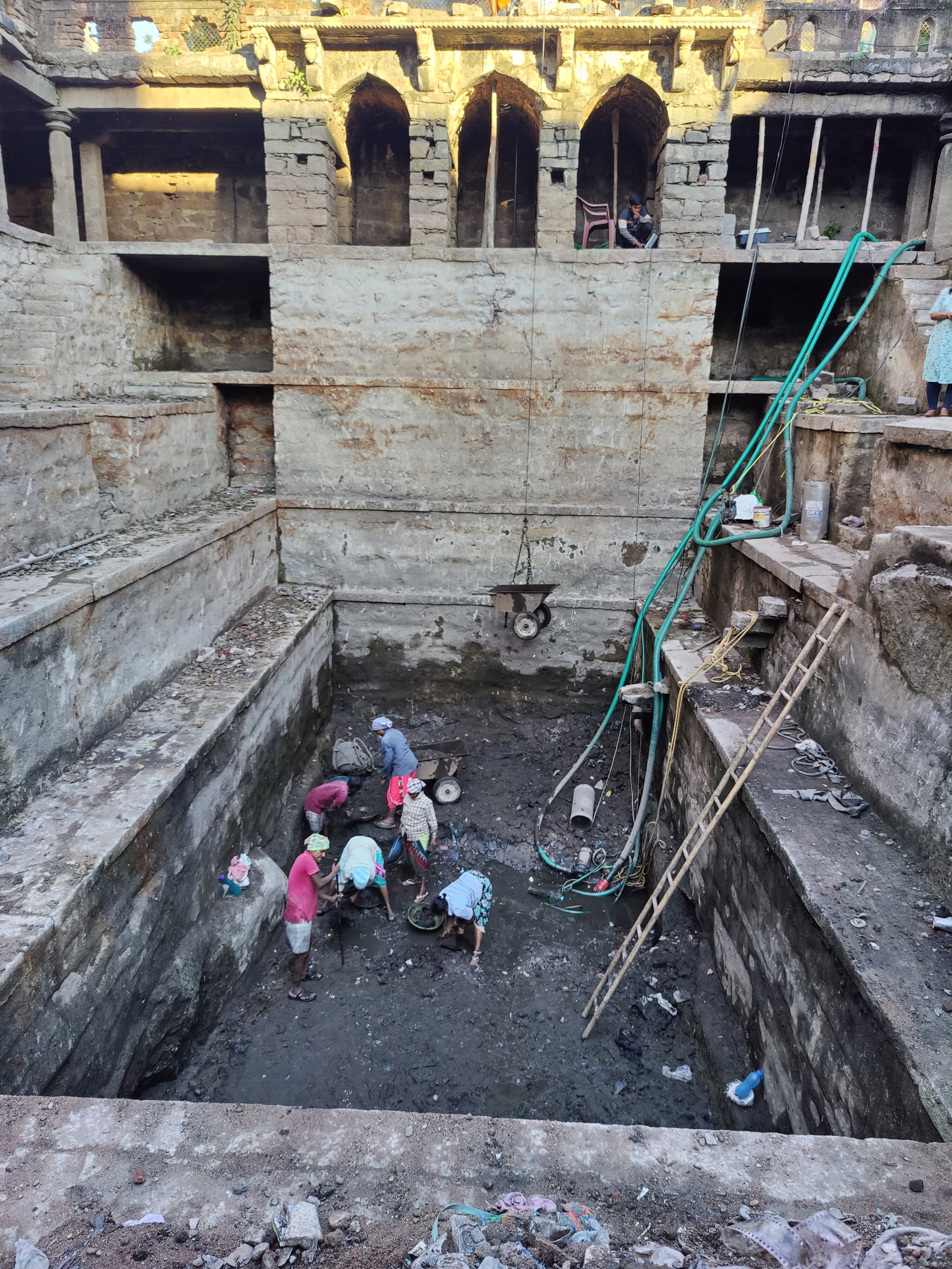
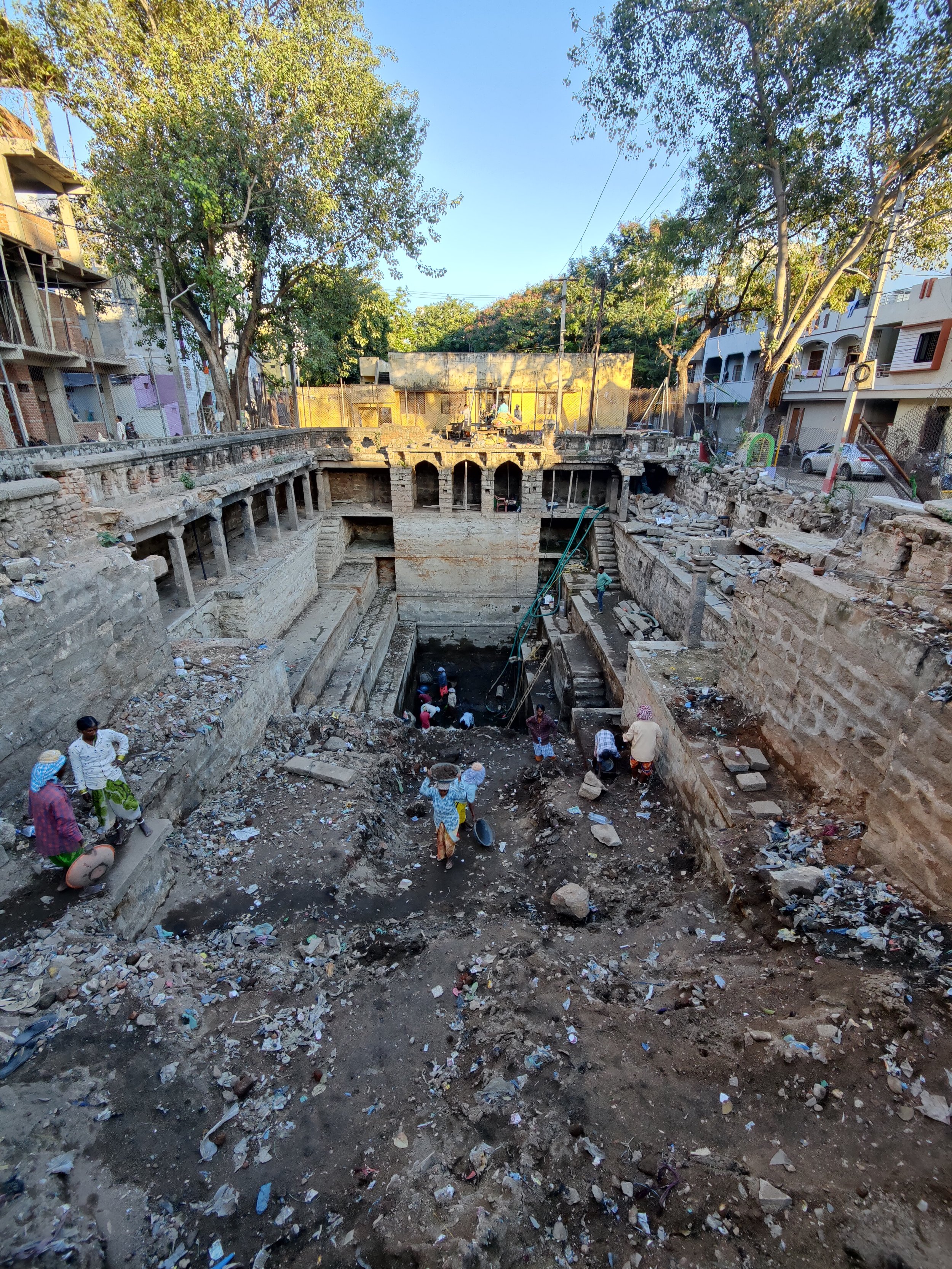
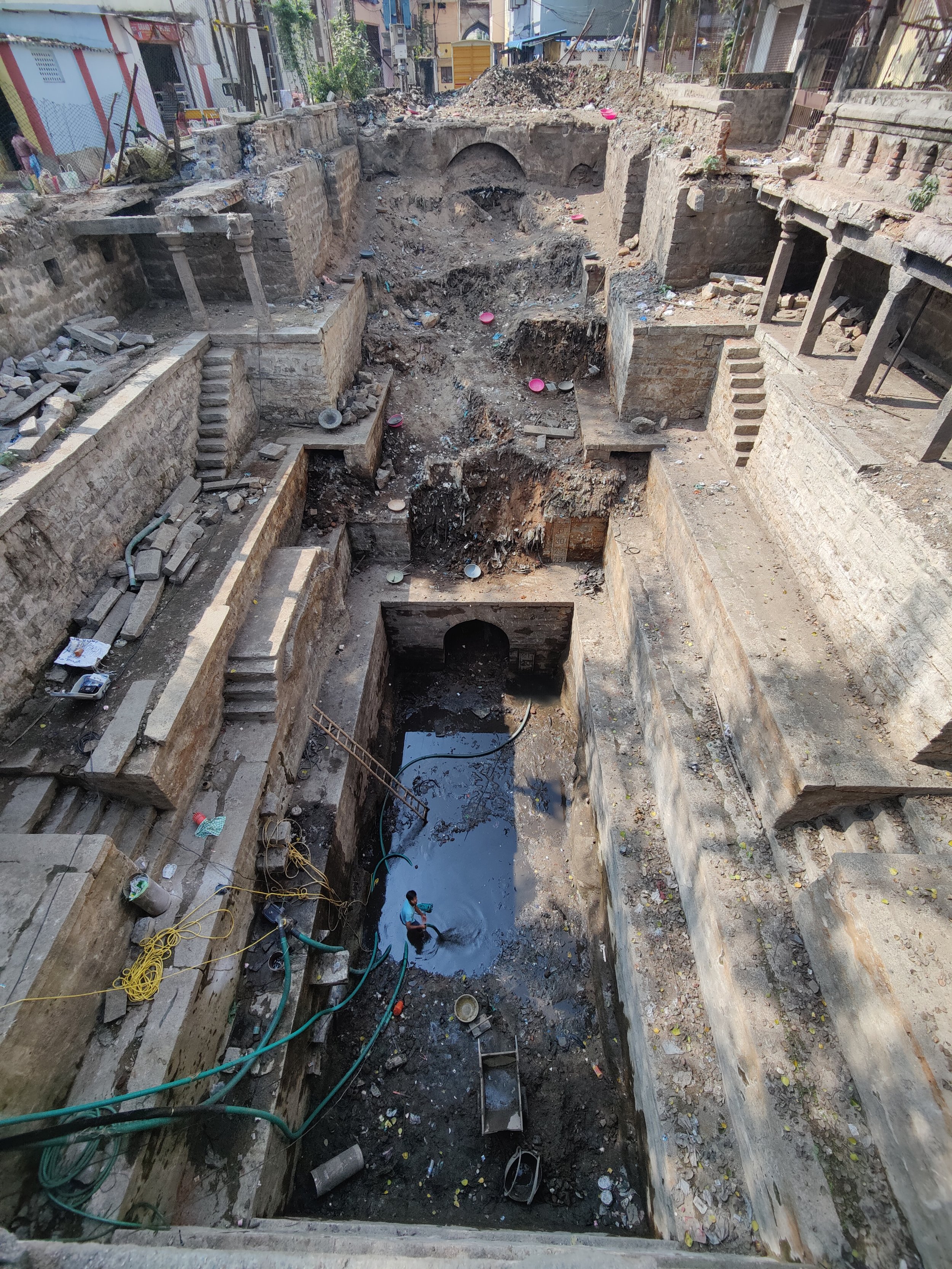
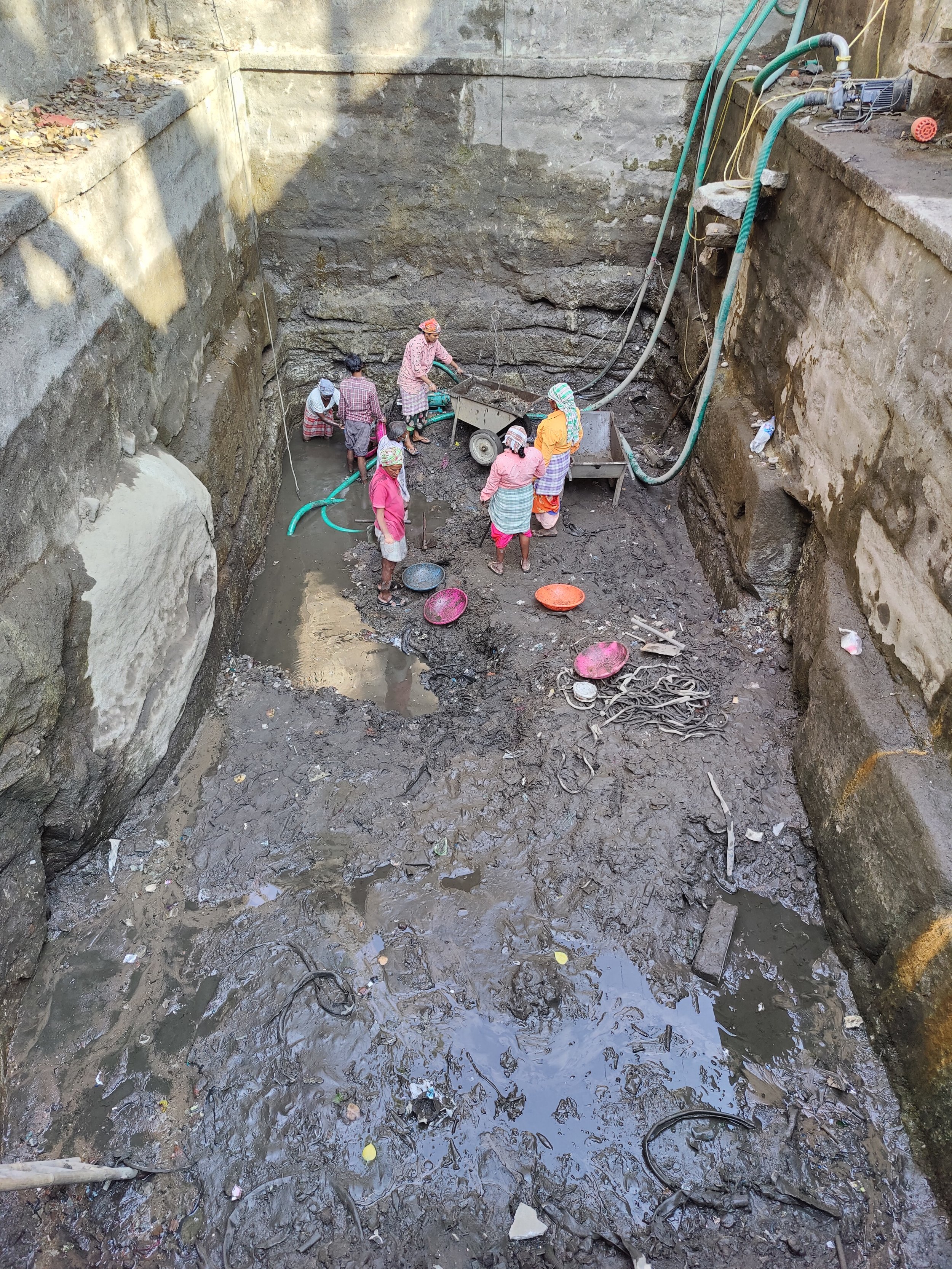
I have created a series of time lapses at the Bansilalpet stepwell in its current avatar illustrating its appeal as a social venue including long exposures highlighting the architecture, design elements and environs of the stepwell. I have also presented documentary evidence of what it used to be - a now and before - as a reference of what was and what can be. The footage you see in this section is recorded by Venkatesh Vinnakota - project manager at the Rainwater Project and Mrs. Ramesh’s aide. He had the presence of mind to realise the importance of documenting the process of discovery and restoration including the exceptional hard work of the people who put in a year of their lives to remove in excess of 2000 tonnes of garbage and desilt the entire well. One can only imagine the ecstatic feeling he would have had when he saw pure water pouring into the well from the ancient aquifers. Hear him narrate his experiences as he relived every day of the year he spent restoring the well.
The objective of creating such spaces isn’t just as a hub for culture, or as an Instagrammable place, not as a place for “selfies“ but as an integral part of the society. As a center for learning and understanding human settlements, for the layman to understand the crucial significance of urban planning and its undeniable relation to our heritage and our culture. A place where young minds can understand the significance of water and its conservation, the knowledge of generations our ancestors have tried to share in the form of the structures they have built. For example, the flow of pure water into the Bansilalpet stepwell isn’t just from one source, it is from multiple sources, at multiple levels and at varied strengths. In our schools we are taught the horizons of soil - Organic Layer, Top Soil, Eluviation Layer, Sub Soil, Parent Rock and Bed Rock - the water in this stepwell, like almost all other stepwells, isn’t flowing in at just about any level. It is flowing into the well at the Bedrock and is therefore able to retain its purity and sanctity. Imagine the thought process that has gone into creating something at the scientific level as this so many centuries back.
Watch the short film and listen to the sound of fresh, pure, life giving water as it infinitely flows into the well from deep within the bowels of the earth.
This short film will be screened at the Ramanaidu Studios on 15th March 2024 at IST 17.30hrs in 4K Anamorphic CinemaScope.
Siddhartha Mukherjee’s meticulous sensibility and creative journaling stems from the affinity towards Nature and the stories that make it magnificent. In his own words, “I find silence and serenity in myself when I spend time in nature and feel its authenticity”. And from this silence and serenity arose this video dedication called ‘The Sound of Water’, documenting the Then and Now of the 17th century stepwell (Naganah Kunta) in Bansilalpet, a bustling neighbourhood in Hyderabad, that houses this magnificent historical water structure.
Rescued from beneath 2000 tonnes of garbage and the weight of public apathy, today the stepwell is a water positive and sustainable restoration that has added precious litres to the groundwater in the area and notably so, a social and idealogical impact as well.
Siddhartha has portrayed the voice of water in his compassionate style.💧
~ The Rainwater Project
THE SOUND OF WATER 💧
A beautiful 20 min film on the impact of #BansilalpetStepwell in the eyes of Siddhartha Mukherjee
March 15th , IST 17 30 hrs onwards at
Free entry
Please RSVP: 9492453373
Limited seats only
The women who made it possible!
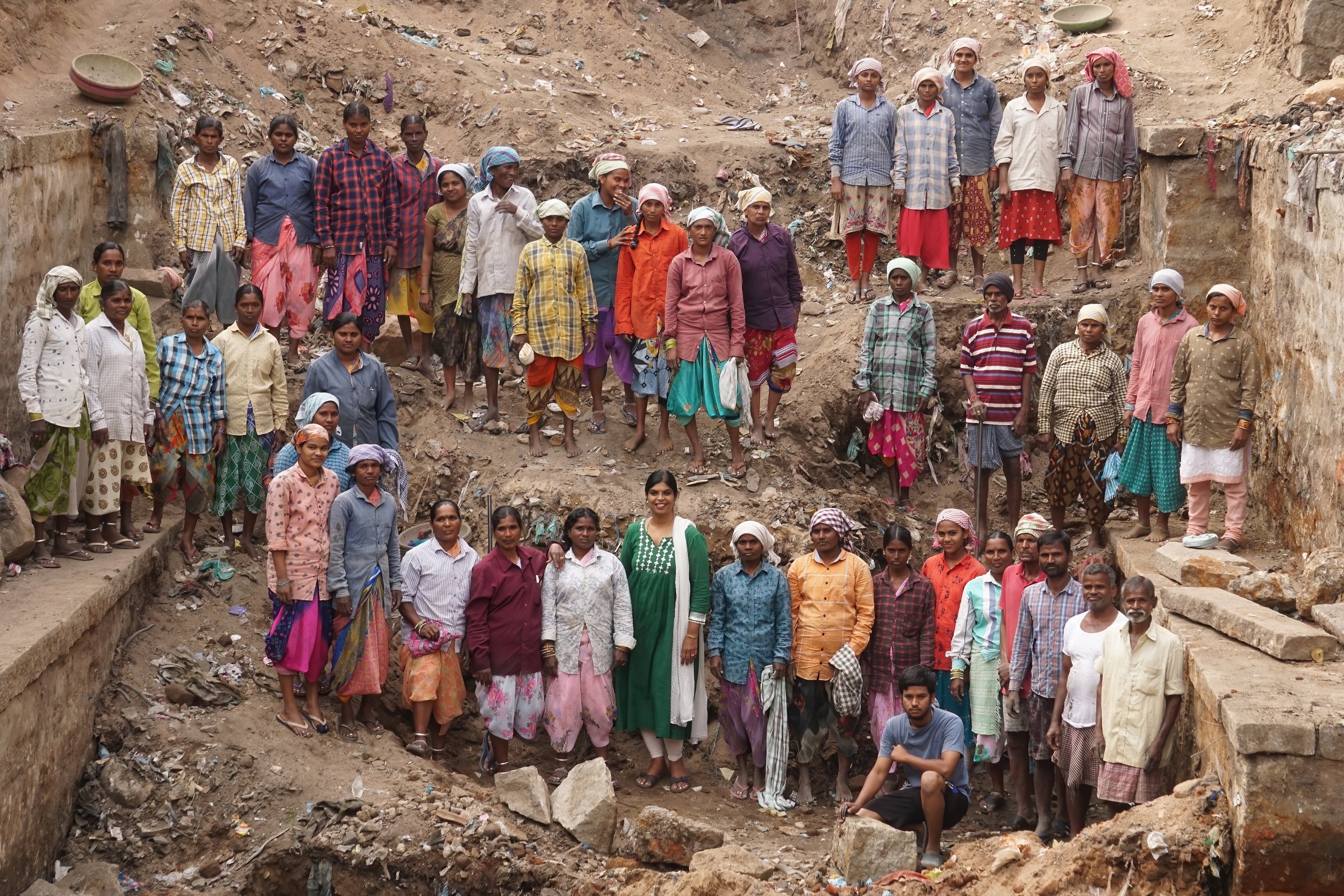
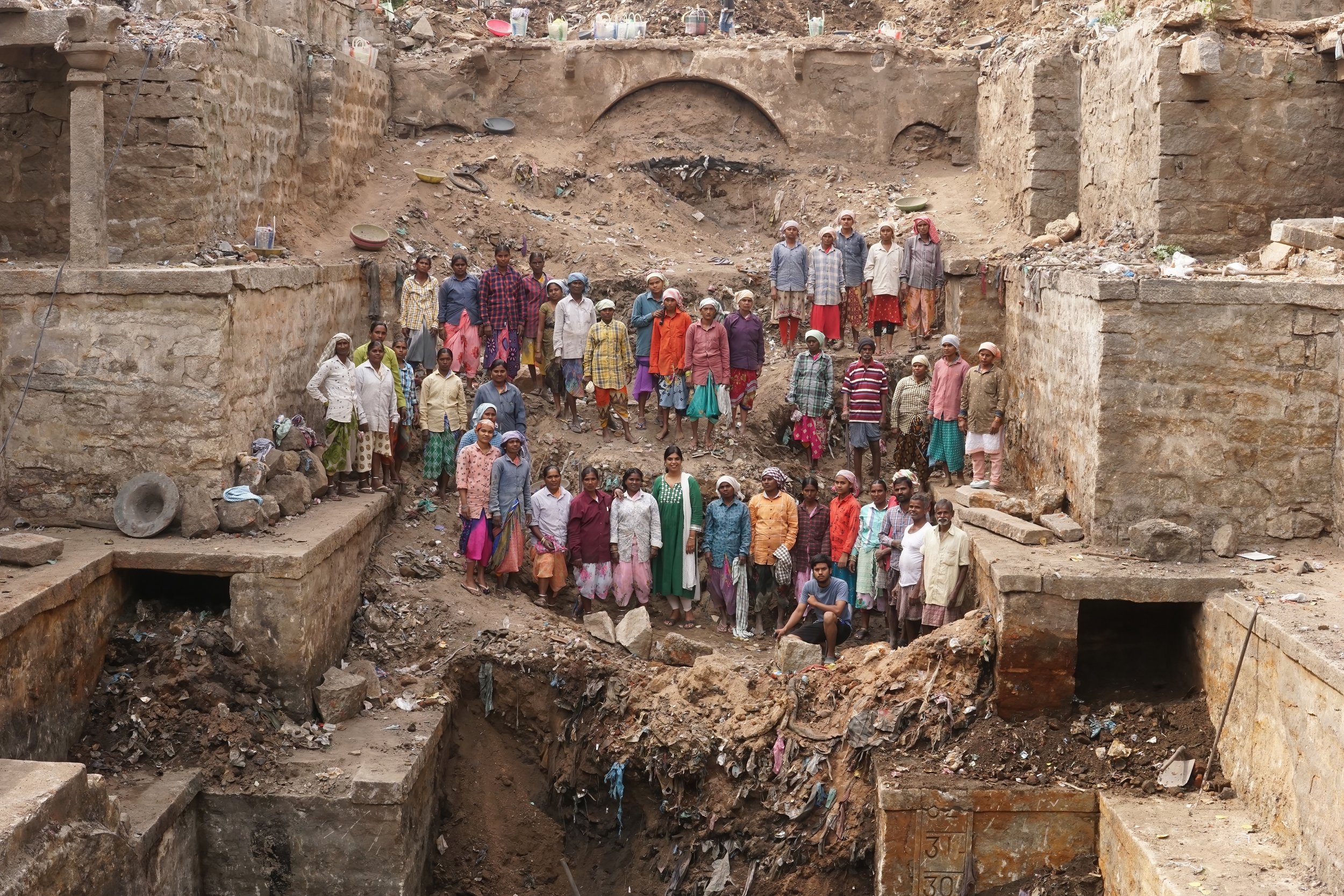
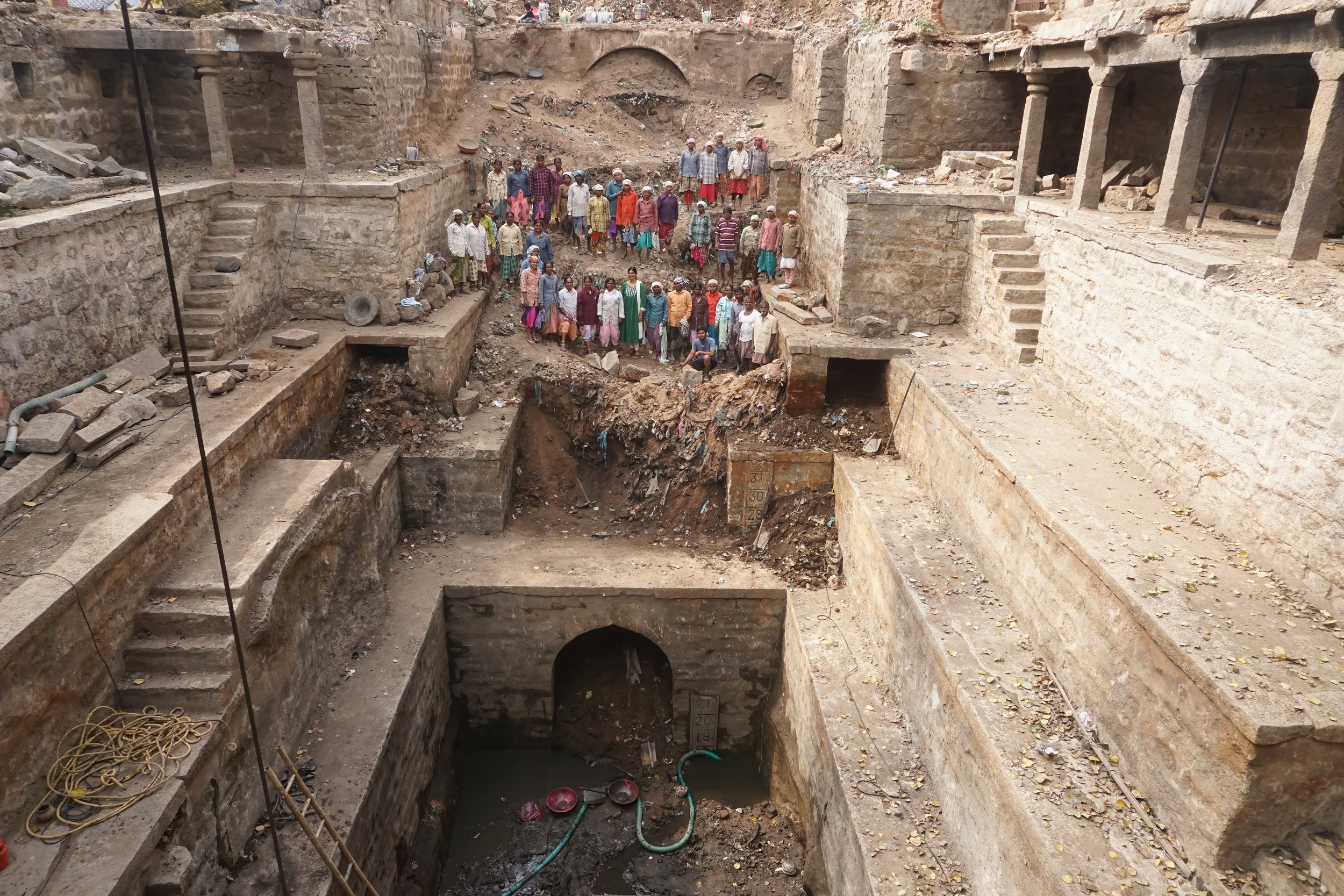
The earliest stepwells are speculated to have been built during the 1st Millennium AD and scholars have estimated that by the 19th century several thousand stepwells in varying degrees of grandeur had been built throughout India - in cities, villages, and eventually in private gardens, where they were known as “retreat wells”. Stepwells also proliferated along crucial remote trade routes, where travellers and pilgrims could park their animals and take shelter in covered arcades. They were the ultimate public monuments, available to both genders and every religion - seemingly anyone but for the lowest-caste Hindu. It was considered extremely meritorious to commission a stepwell, an earthbound bastion against eternity, and it is believed that one-fourth of those wealthy or powerful philanthropists were female. Considering that fetching water was (and still is) a task assigned to women, the stepwells would have provided a reprieve in otherwise fairly monotonous and regimented lives, and gathering down in the village stepwell was an important daily social activity.
Stepwells are categorised by their scale, layout, materials, and shape: they can be rectangular, circular, or even L-shaped; they can be built from masonry, rubble, or brick; and they can have as many as four separate entrances. No two stepwells are identical, and each - whether it is simple and utilitarian or complex and ornamented - has a unique character. Much depends on where, when, and by whom they were commissioned and how deep they had to go before they hit the water table.
Bansilalpet Stepwell is located between the Sri Nalla Pochamma Devasthanam - partially visible in the time lapse on the left - and the Sri Yerra Pochamma Devasthanam behind the stepwell. It is believed that water from this well used to be drawn for the purification of the goddesses. Water from the well was also supplied to the Gandhi Hospital and other residential areas. In 1933, in what used to be the Bhoiguda village, the model village was planned by Terence Keyes, funded by Seth Bansilal, a wealthy benefactor of his era, around the stepwell and a playground with small houses surrounding it. Some of the houses in the near vicinity of the stepwell still carry the numbering that was created at the time along with the foundation stone that was laid by Terence Keyes on February 13, 1933 in the kaman. Even as late as 2003, the colony retained its basic structure. According to an initial study by historians, the well, in all likelihood, predates the construction of the residential colony. In modern terms, the model village back then was similar to a gated community with private amenities and social areas like a playground.
But around the 1980s, the stepwell fell into disrepair and neglect, and eventually became a garbage and waste dumping ground. The entire structure was gradually covered in waste, disappearing from view and fading from memory. The stepwell lay covered in debris and ruins for more than four decades before being given a fresh lease of life. Mrs. Kalpana Ramesh of the Rainwater Project stepped in, along with architectural firm Kshetra Consultants and with the support of the Municipal Administration and Urban Development (MA&UD) department of Telangana, and decided to renovate and revive the stepwell and the neighbourhood. The restoration work began with an MOU between the Rainwater Project and the Telangana government on October 21, 2022 and took more than 500 days, involving 100 professionals and a 1000 workers of which 70-80% were women. Funding the entire project was a very different beast in itself. A substantial portion came from the government, another large portion was generated by Mrs Ramesh through a lot of campaigning, there was an amazing dance outreach program which also generated some funds and in the last couple of weeks destiny played a hand in the form of individuals who contributed generously to bridge the final gap. A mammoth undertaking by any measure given the location of the stepwell in the heart of a middle-class locality, laced with its own challenges. These challenges cannot be fathomed by someone who hasn’t been involved in the project from Day 1 and today I can only appreciate the immense resilience, patience and commitment exhibited by the entire team to deal with and overcome these challenges. For instance, there was a smaller Ganesha temple on the peripheral wall of the site which had been there for 22 years. That needed to be relocated and we all know how these situations can quickly spiral out of control. During her conversations with the temple trustees and research Mrs. Ramesh discovered a sewage line beneath the temple. After discussions with the Zonal Commissioner she was able to relocate the sewage line and it was only then that the temple trustees agreed to relocate the Ganesha temple. The “yagya” for the relocation was also performed by Mrs. Ramesh. The transformer that was there on the erstwhile garbage dump was also relocated and numerous street lamp posts were installed. The Gandipet Welfare Society - GWS - funded the project after the MoU with the Government which was a help as the project, in its nascent days, was being crowd funded. The entire tourist plaza and cobblestone walkways with street lights were funded by HMDA. The GHMC, with TRP, initiated and was responsible for revamping utilities in the neighbourhood along with HMWSSB and TSPCB.
During the process of the physical restoration, Mrs. Ramesh and her team chanced upon the multiple freshwater sources 20-25 feet deep under the stepwell - these were sources with varying flows practically ensuring the well would never go dry. This led to an increase in the overall water carrying capacity of the well and will most certainly help the residents fulfil some of their water needs.
The Journey of Restoring Bansilalpet Stepwell is available as a book too.
Bansilalpet Stepwell Mantapam (on the left), Corridors & the Grand Entrance (on the right)
The 33-foot-deep stepwell restoration started with removing the 2000 tonnes of trash, including unexpected items like a transformer, and desilting the well. This trash accumulation over 40 years is a third of Hyderabad's daily waste. Strengthening work followed, replacing damaged stone columns and beams with custom stone blocks, fixing wall joints, and reconstructing walls with lime and bricks in the original style. The entrance's wall was redone, the surrounding boundary was improved, cobblestones were laid around the well, and landscaping was done with added gardens and galleries detailing the restoration process. The stepwell now features pathways, lighting, a plaza, an interpretation center, an amphitheater, a jogging track, and a garden, turning it into a popular heritage site. The project cost over INR 2.6 crores and was opened on December 5, 2022, by the then Telangana Municipal Administration Minister K T Rama Rao.
Restoring the stepwell in Bansilalpet village revived the area by improving water resources, managing rainwater, and preventing floods. The renovated site features a functional stepwell, amphitheater, tourism plaza, interpretation center, and cafe spaces that can become hubs for artists in the future. Preserved architecture not only narrates history but also enhances practicality and artistic value. Revived spaces evoke the essence of a location, inspiring admiration and reverence for the past, especially among local residents. Architecture serves as a testament to civilisation, and a visit to the Bansilalpet Stepwell offers a glimpse into history, offering a peaceful and practical retreat from modern chaos.
Bansilalpet Stepwell Tourist Plaza Garden & Walkways
Bansilalpet Stepwell Tourist Plaza Ground Floor Gallery 1
Bansilalpet Stepwell Tourist Plaza Ground Floor Gallery 2
Bansilalpet Stepwell Tourist Plaza First Floor Gallery
Bansilalpet Stepwell Tourist Plaza Model Village Mural - First Floor Gallery
Bansilalpet Stepwell Tourist Plaza First Floor Gallery
Bansilalpet Stepwell Tourist Plaza Stairwell
The Bansilalpet Stepwell has been restored and now holds 22 Lakh litres of water. It can also save 35 Lakh litres of rainwater each year. Six traps beneath the walkway collect rainwater and recharge the stepwell. The stepwell's location in the upper catchment area of Hussain Sagar helps prevent flooding and reduces overflow into lower areas during heavy showers.
The Bansilalpet stepwell caught the attention of Prime Minister Narendra Modi. During his 'Mann ki Baat - Part 34 on 27th March 2022' starting at 18:04, he praised the efforts to restore the centuries-old structure, which was previously filled with garbage and debris but has now been revived. The stepwell was also awarded the Big 5 Construction Impact Award in Dubai on 5th December 2022, winning the Sustainable Initiative of the Year Award in the MEASA region. You can find the specific mention of the Bansilalpet stepwell in the telecast on YouTube, with visuals starting at 18:20.
The Hyderabad Design Forum (HDF) found the hidden beauty in these stepwells in 2015 and decided to document them in a book. The Rainwater Project, on the other hand, is working to protect these stepwells for our cultural heritage. The Rainwater Project, in collaboration with the MA&UD department, is now restoring all 140 stepwells in and around the city, and some, like Bhagwandas Bagh Baoli and Shiva Bagh Baoli near Gudimalkapur, have already been restored.
Related Posts

